A 14-day itinerary in France is perfect for visiting the main sights. Let’s see in detail how to prepare for this trip, with a travel plan day by day. During these 2 weeks, you will see multiple faces of France, probably making you want to come again! Welcome to France!
Good to know for an itinerary in France of 14 days
- Visa
- Plug outlets
- Internet connectivity
- Taxi
- Payments
- Plane tickets
- Etiquette
1. Do I need a visa to stay 2 weeks in France?
UE & Schengen area. Citizens from UE and the Schengen area can travel visa-free to France.
Visa Exemption. US Citizens can travel visa-free in France. You can arrive in France and travel without applying for a visa beforehand. That’s also the case for over 60 countries, for instance, Canada, the United Kingdom, Japan, and Brazil.
Travel Authorization. If you travel with a visa exemption, you must obtain an Electronic Travel Authorization (ETIAS). It works like the American ESTA or the Korean KETA. It will be mandatory in 2024. Travel authorization is not required if you have a visa.
Visa. Citizens who cannot benefit from the visa exemption must apply for a visa before traveling. The visa is European and valid for the whole Schengen area for up to 90 days.
See here our comprehensive guide about France entry requirements.
2. Plug outlets
France uses electricity sockets type E. The voltage is 230V.
Europe. Not grounded Type C plugs are compatible with sockets in France. Grounded Europlugs Type F are NOT compatible with the E Socket: you will need an adapter.
US, Canada, Mexico. US plug type A or B (grounded) are NOT compatible with the sockets in France. You need an adapter (see prices here). Moreover, the voltage is 230V, while 120V is in the US. It means you must check that your device is compatible with this voltage. Nowadays, most devices are built to be compatible with the US (120V) and the rest of the world (220V – 240V) voltage. See here an adapter with voltage converter.
UK, Singapore, UAE, Qatar, Saudi Arabia. The Type G plugs are not compatible with electricity sockets in France. You will need an adapter.
Pro tip. Buy one adapter, and pack a power strip to power all your devices simultaneously.
3. How do you get Internet connectivity in France?
It is always helpful to have Internet connectivity while traveling. For instance, locate yourself with Google Maps, order an Uber, and read information about a place. Here are the best ways to get Internet connectivity in France.
Roaming. Roaming is the easiest way to get Internet connectivity in France. It is also costly. Prices depend on your provider. For instance, AT&T has an International Pass for 10$ a day. So it will cost you 140$ to get Internet connectivity with roaming.
Free WiFi. There is Free WiFi in many cafés and restaurants. Unfortunately, it is not reliable. You will have to ask for the WiFi password (Puis-je avoir le mot de passe du WiFi, s’il vous plait?). It is usually a hassle, so we don’t recommend it.
Pocket WiFi Box. Pocket WiFi boxes are small battery-powered devices you keep with you every day. It is a 4G modem that shares its Internet on a private WiFi. You can then connect all your devices to this private WiFi. You can rent a Pocket WiFi Box in many places or have it delivered to your hotel when you arrive. The rent covers Internet usage, so you won’t have an unexpected fee later. The drawback is that you need to recharge this device daily and hope it stays on the entire day. Prices are about 200$ for 14 days in France. Not worth it. See prices here.
Local SIM. You can buy a SIM when you arrive. It is usually cheap. The drawback is that you must find a seller when you arrive. Store your SIM in a safe location to avoid losing it. Since you have a new number, it also messes up your iMessage/FaceTime configuration. Lastly, you must change the SIM if you need to connect somewhere where you receive a 2FA code on your phone. It’s not convenient at all.
Local eSIM. eSIMs are virtual SIM cards. To install an eSIM on your phone, you only need to download it. Your smartphone must be compatible. It has worked on the iPhone since the Xs/XR was released in September 2018. Since it is a virtual SIM, you don’t need to remove yours. An eSIM is dirt-cheap and very easy to use. Since it is installed on your phone, it works flawlessly. An eSIM for 14 days in France with 2Go of data costs 7,50$. It is the cheapest option to get Internet Connectivity in France. We recommend buying an eSIM on the Airalo app, which we use. See prices here.
5. Payments in France
Credit Card. France’s only currency is the Euro. Credit cards are broadly accepted, especially Visa and Mastercard. AMEX is often limited to big stores or hotels. For example, don’t expect to use an AMEX to pay for public transportation.
Apple Pay. Apple Pay is accepted almost wherever you can already pay by credit card.
Minimum amount. Some small shops can have an amount minimum to accept credit cards, for example, 10€. They will only accept cash for smaller amounts.
Cash. You can get cash in any ATM. You will find ATMs in every city on this 2 weeks itinerary in France. They are often free of charge, meaning you will not have to pay the French bank to withdraw. Nonetheless, your bank provider can charge you, for example, for withdrawing in another country or another currency. 100€, 200€, and 500€ notes are (almost) never used in France.
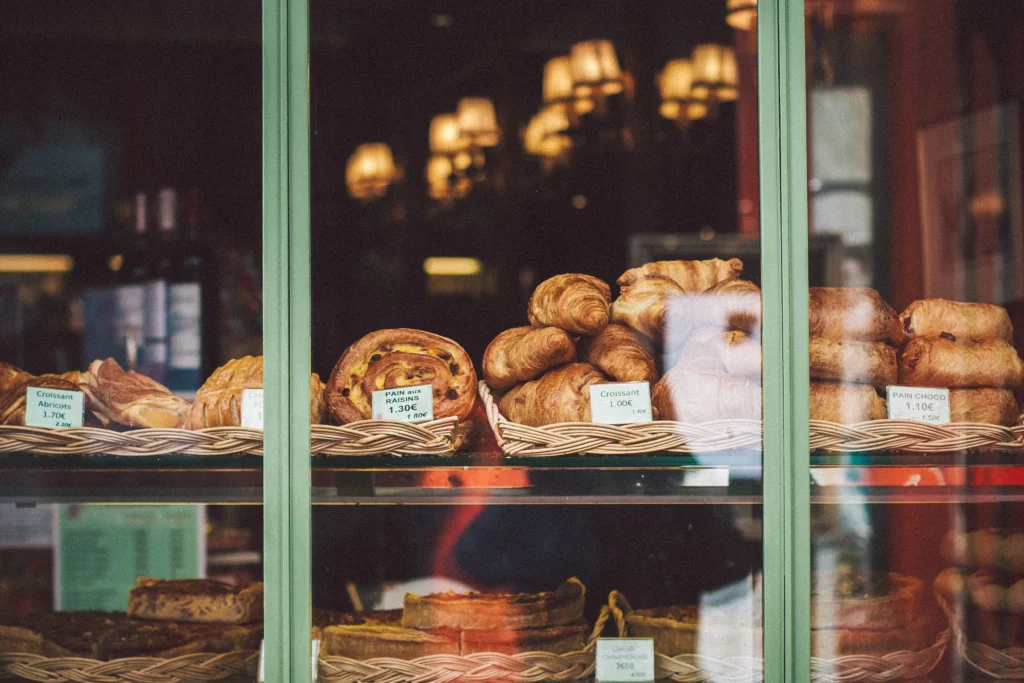
5. Taxi in France
Taxi. You can hail a cab in the street in Paris. In other cities, there are rarely taxis. Taxis do not have a specific color. You must look for the “Taxi” sign on top of the car. In Paris, there are taxi stations where taxis are sometimes parked.
Uber. Uber is available in France. There are often drivers available. Expect to wait about 10 minutes for the driver to arrive. There are fewer drivers in smaller cities, but it is available. There are other Uber-like apps in France, for instance, FreeNow or Bolt.
6. Plane tickets
Finding the ticket. Google Flights is the site to go for finding the best plane ticket. There are many international direct routes from all over the world, especially the US or Canada. There are even direct flights to Paris from Raleigh, North Carolina, and Cincinnati, Ohio.
Book on the company site. Always book your plane ticket on the company site directly. When using travel agencies to buy your tickets, you can get fewer services, for example, no choice of seating. When problems happen, it is always a hassle with intermediaries, whereas the company usually has good customer service.
2 Airports. There are 2 main airports in Paris: Charles-de-Gaulle (CDG) in the north and Orly (ORY) in the south. CDG is the biggest airport in Paris. You will find many direct flights to CDG. You can find flights to ORY with a stopover. ORY is closer to Paris and less convenient with public transportation. If your accommodation is south of the Seine, and you plan to take a taxi from the airport to the city center, you can opt for ORY. Otherwise, prefer CDG.
7. Etiquette
Tip. Service is always included in France, so tipping is not mandatory. Tipping is a clear sign you enjoyed the service. A 10% tip is a great tip.
Speak baguette. It is always welcome when a foreigner tries to speak the local language. If you can write and thank in French, you may have a significantly better experience. On this 14-day itinerary in France, it is especially true in less busy areas like Amboise or Caen.
- Bonjour: literally “good day”, to be used from the morning till the evening
- Bonsoir: literally “good evening”, to be used in the evening or at night
- Merci: thank you
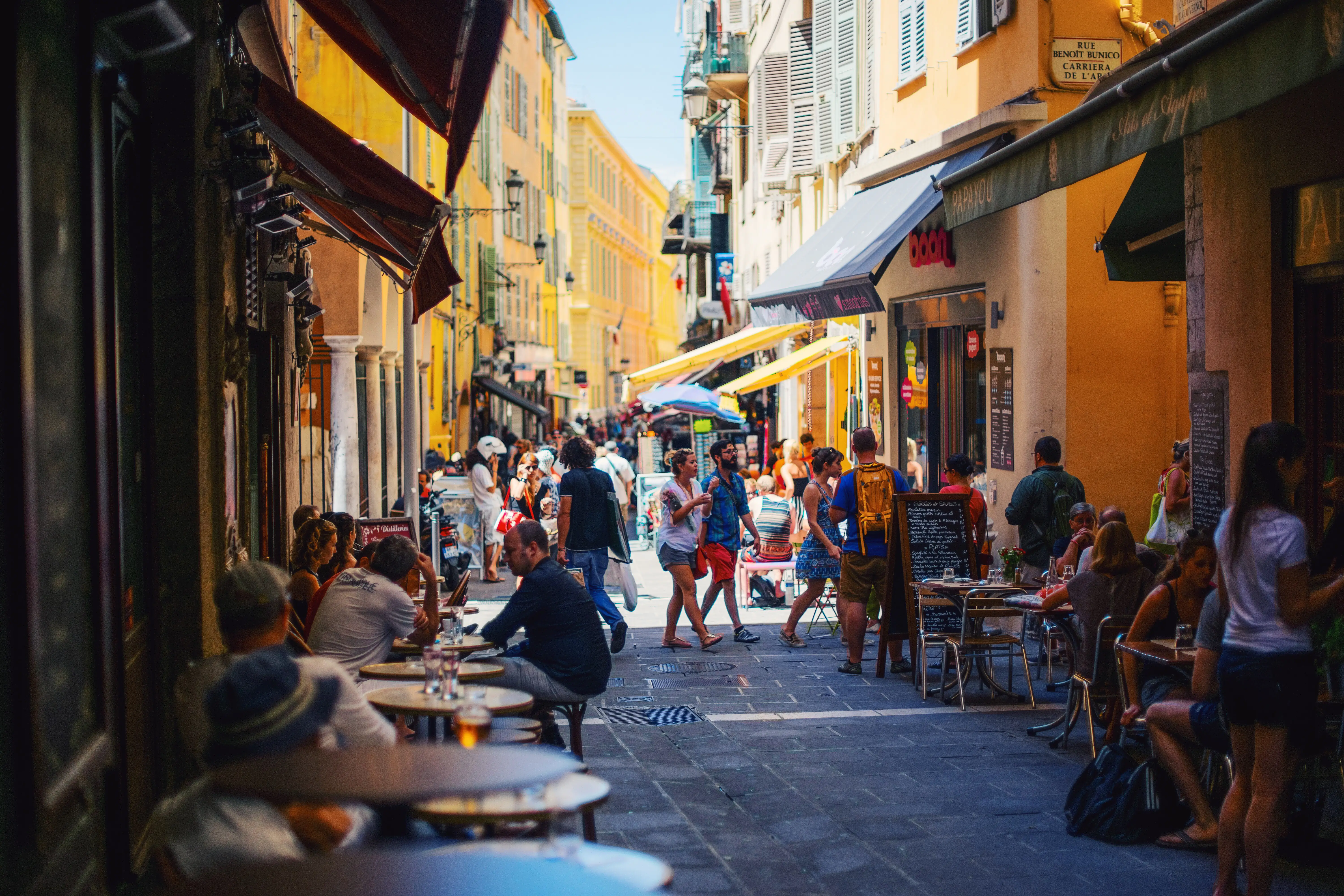
The best time to visit France on a 14-day itinerary
May to September. The best time for this 14-day itinerary in France is from May to September. The weather is rarely too hot in the French Riviera, Normandy, and Paris during the summer, so that is not an issue. Instead, it will be clear and mild weather, perfect for a vacation. Moreover, it is the tourist season so you can enjoy ferry service on the French Riviera.
June. The best time to visit France for 2 weeks is in June. It’s not already the vacation break, so it is not the peak season. Moreover, the lavender fields are blooming. The weather is excellent. It’s the perfect time to enjoy France.
Winter. The best season to visit France while it is not busy is during the winter. The French Riviera is not at its best during this season. You might prefer to see the Alsace region, especially the Strasbourg Christmas Market.
March, April, October and November. During these months, the weather on the French Riviera can still be good. Paris is still busy, but it is not the peak season. Normandy is still enjoyable even though it can be rainy: it gives a new atmosphere. It is a great period to visit France on a 2 weeks itinerary if you aren’t looking for Californian weather.
14 days itinerary in France
Day 1 – 5: Paris
We begin this 2 weeks in France by visiting Paris.
Accommodation. To avoid wasting time on transportation, choose a place to stay in Paris in the center. The best area is between the Eiffel Tower, the Garnier Opera and the Pantheon. You will be able to do some sightseeing on foot! See here the best places to stay in Paris.
Click here for the best things to do in Paris.
Day 1. Arrival in Paris
Arrival. You should arrive at CDG Airport. There are 3 airports in Paris, and Charles-de-Gaulle (CDG) is the main one, with international flights. It is far from Paris, expect at least 1 hour travel time to the city center.
Airport transfer. You can take a Taxi or Uber from the airport to the city center. There are no taximeter as there are 2 fixed prices: one if you go north of the Seine river, another a little bit higher if you go south. With luggage, it is the best way to go from the airport to the city center. There is also a train, the “RER B”, but it can be unsafe – especially in the evening – as the train stops in some bad districts. Also, you will probably need to transfer to another metro to reach your place of stay, so it’s not worth it.
Money. The best way to get Euros is to withdraw cash in an ATM at the airport. If you have a Visa or a Mastercard, you can pay almost everywhere by card, so you will not need much cash. There are ATMs in every city on this 14-day itinerary in France, so you don’t need to withdraw a lot of money at a time.
Evening. The best thing to do in Paris on the first evening is a dinner cruise on the Seine. You will get an overview of the city from the river and a first glimpse of the sights in Paris: the Eiffel Tower, the Louvre Museum, the islands, and Notre Dame de Paris. Click here to see the best dinner cruise in Paris.

Day 2. Eiffel Tower & Champs Elysées
Eiffel Tower. The Eiffel Tower, or the Iron Lady as the French call it, is the main sightseeing in Paris. It was built temporarily for the World Expo 1889. But it found a new use as a radio tower in 1910 and thus stayed. Did you know the legendary con artist Victor Lustig sold the Eiffel Tower twice?
Best views. There are 2 best views of the Eiffel Tower. The first is from the Trocadero Esplanade. It is right in front of the Eiffel Tower. Bonus: It is elevated so that you can get a great photo of the whole tower. The second best view is from the Passy Bridge. Here you will have a great of the Eiffel Tower with the Seine River. If you are still reading, here is a secret spot: the Camoens impasse. Here you will have a great view of the Eiffel Tower between typical Parisian buildings. The drawback is that you must walk here only for it, as it is not on an itinerary.
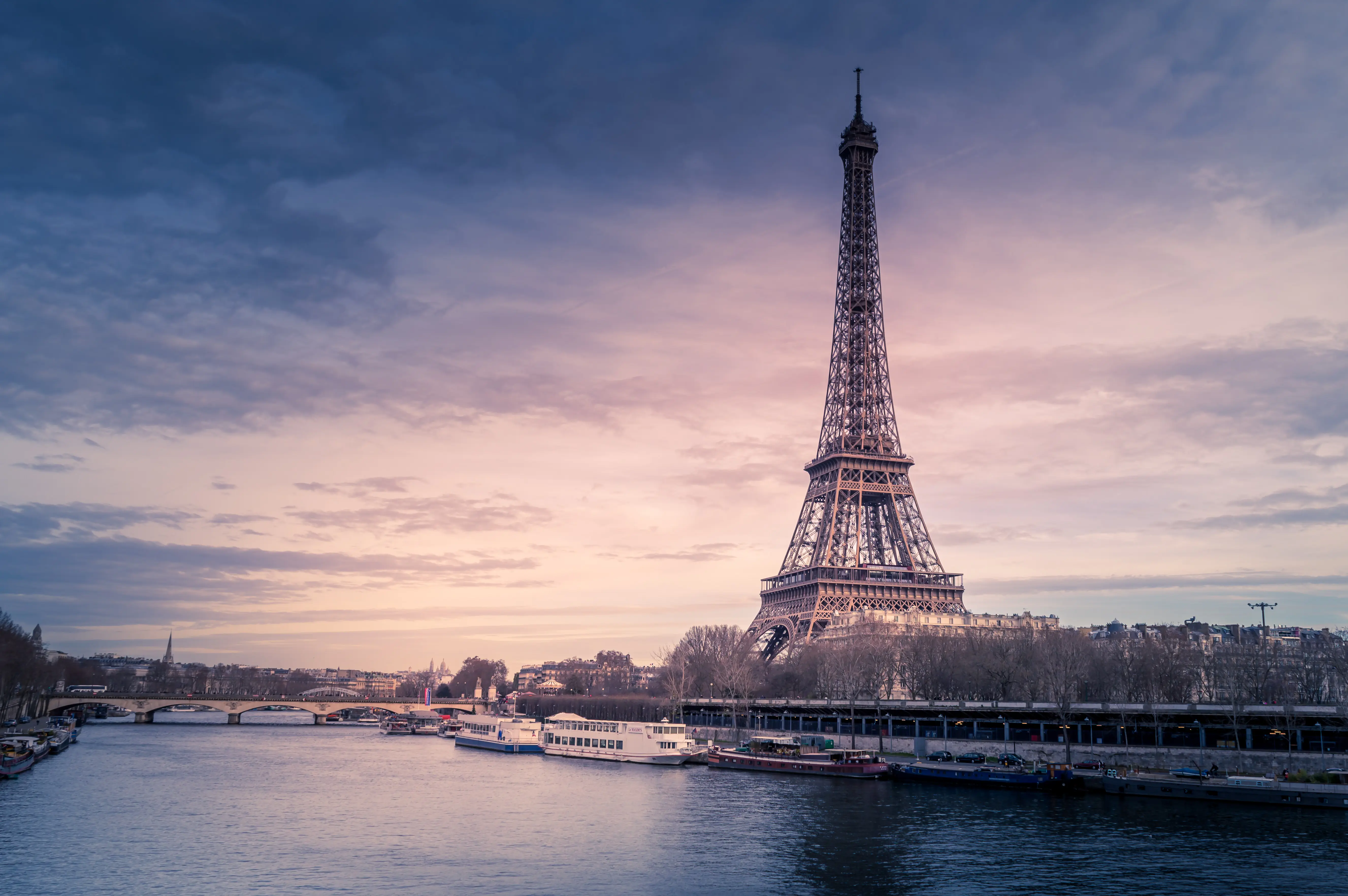
Climb the Eiffel Tower. There is always a queue to climb the Eiffel Tower, so consider taking a skip-the-line ticket in advance (click here to see prices). There is a restaurant on the 1st floor and 2nd floor. A great place to eat for a romantic stay in Paris! Click here to see our guide for visiting the Eiffel Tower.
Saint Dominique Street. Head to the Saint Dominique street. You will find many restaurants and authentic bakeries with the famous croissant and baguette. You can stop here to eat or to drink. Follow the street until you arrive on Invalides Esplanade.
Invalides. The Hôtel des Invalides is a building dedicated to war veterans, especially the wounded. It was a hospital and a retirement home. Today, it is still a military building, home of the Paris military governor. There is a museum of the French army, the most victorious army in the world, so a visit is worth it if you like military history. You can also find the tomb of Napoleon.
Alexandre III bridge. Head towards the Seine River and the bridge Alexandre III, a gift from Russia celebrating the friendship between France and the Russian Empire. It is the most beautiful bridge on the Seine. You can also get a great view of the Eiffel Tower from the middle of the bridge.

Grand & Petit Palais. At the end of the Alexandre III bridge, you will find the Grand Palais on the left and Petit Palais on the right. They were built for the World Expo 1900 as an exhibition hall. The Grand Palais is still an exhibition hall today. It is often used for fashion shows. The Petit Palais is a free museum. Free museums are always a good choice if you are looking for toilets: the bathrooms are clean and spacious. Now, the insider tip: There is a restaurant in the courtyard of the Petit Palais. The place is gorgeous, and prices are decent. Furthermore, you won’t find anything in this area.
Champs Elysées. You will now arrive at the Champs Élysées. It is the most prestigious avenue in Paris. Many brands like Apple, Louis Vuitton, and Paris Saint Germain football club try to have a flagship store here. Coming from the Grand Palais, you will be in the lower part of Champs Élysées, so head towards the upper part, towards the Arc de Triomphe.
Arc de Triomphe. The Arc de Triomphe is a monument dedicated to the Revolutionary and Napoleonic wars. It is in the center of the Place de l’Étoile (Star Square). This place represents the traffic madness in Paris: it is a roundabout (we love roundabouts in France!) with no lanes, so you go where you want. Do not cross the road to the Arc de Triomphe. It is hazardous! There are underground passages. You can climb the Arc de Triomphe and get an incredible view of the Champs Elysées and the Eiffel Tower (see photos here).

Day 3. Disneyland Paris
There are 2 Disney parks in Paris: Disneyland Paris and Walt Disney Studios. You can visit both with combined tickets. It is an excellent activity for everyone when traveling with the family. A fun visit during a 2 weeks itinerary in France.
Plan for the entire day at Disneyland Paris. You will need about 1 hour to get to the park from the city center with the “RER A”.
Click here to see our visitor’s guide to Disneyland Paris.
Good to know. The park often closes late at night, 10 pm or 11 pm, during the summer, weekends, or vacation breaks. Take advantage of it! Many visitors come and leave early, so there are fewer queues in the evening. You can also enjoy the fireworks at night.

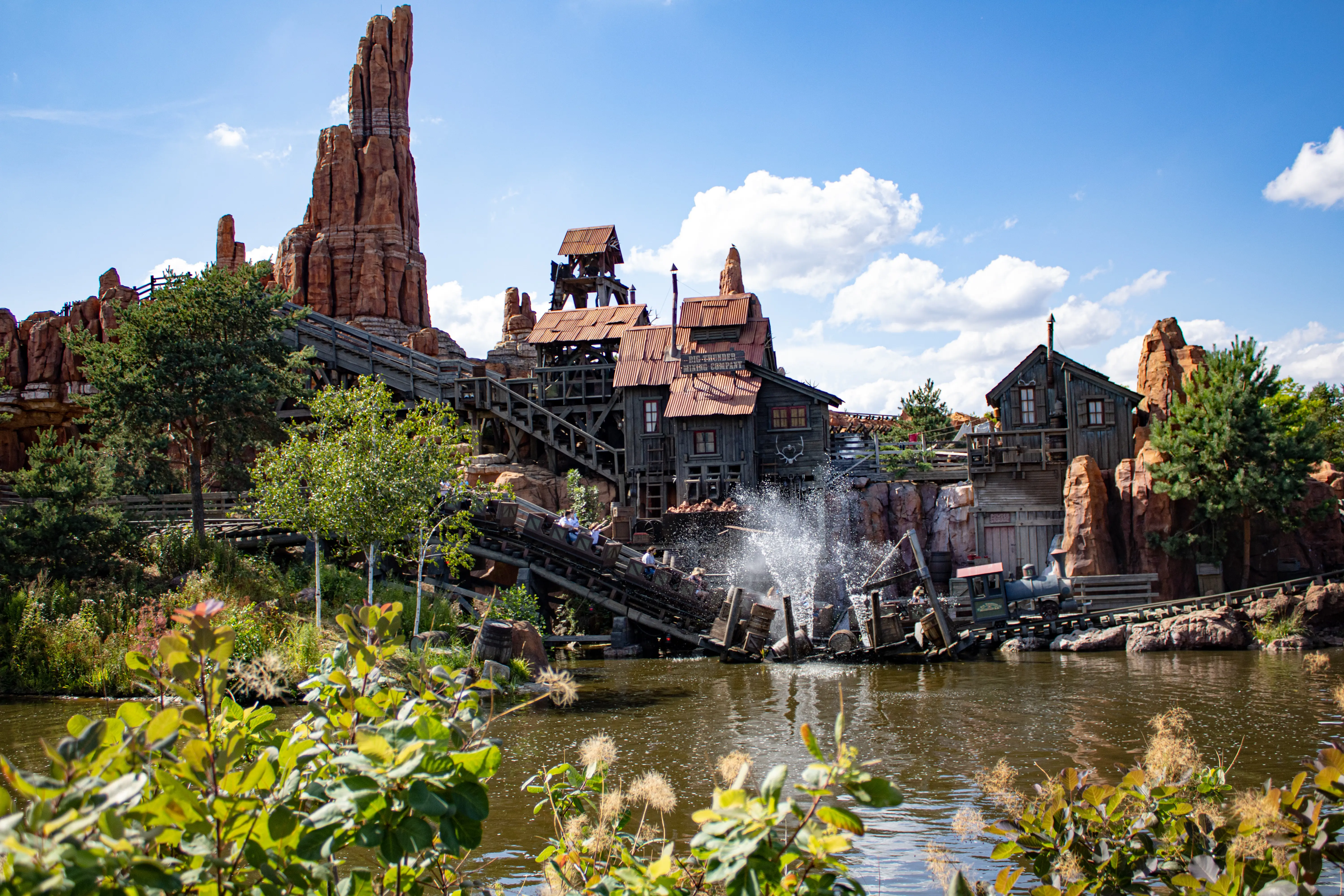
Alternative Park. If you are traveling during summer with teenagers, you may prefer to visit the Parc Astérix (Coming Soon). It is based on the eponym comic series: a gallic warrior living in the only remaining independent village resisting the Roman Empire. You will find more thrill rides and water-based rides in Parc Astérix. It does not have the magic of Disney for the little ones, but it still is a great amusement park.
Historical Park. The most fabulous historical amusement park in France is the Puy du Fou. There are no rides but spectacular shows about historical periods like the Roman Empire or the Vikings. It won the “Applause Award” in 2014, consecrating it as one of the best parks in the world, with Europapark and Tokyo DisneySea. Click here to see how to visit the Puy du Fou (Coming Soon).
Alternative Day 3. Day-trip to Versailles
For those who do not want to visit an amusement park during this 14-day itinerary in France, head to the remarkable Palace of Versailles. It was the last residence of French Kings until the revolution in 1789 and the guillotining of Louis XVI.
The French Kingdom was powerful. The Versailles Palace shows how wealthy and powerful the kingdom was. A stunning palace, extraordinary gardens, and beautiful fountains await you.
You can go to Versailles Palace by public transportation: “RER C” station “Versailles Chateau”. There are other stations in Versailles, but further away. You can also book a guided tour with the transfer included. Public transportation in outer Paris is complex due to different pricing depending on the area.
Click here to see a guide for visiting Versailles Palace.


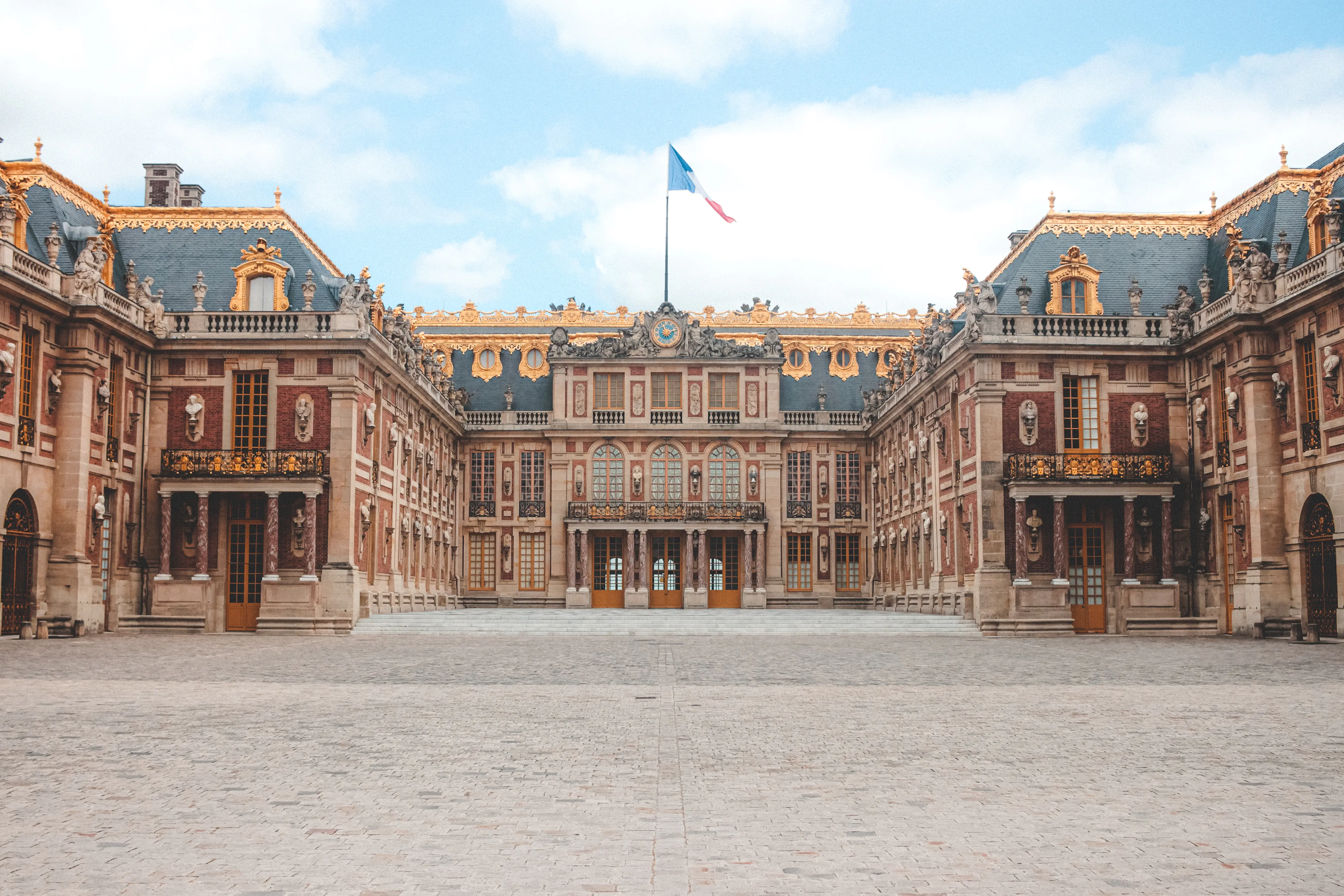
Day 4. Louvre & Montmartre
Louvre. Let’s start the day with the 2nd biggest museum in the world: the Louvre Museum! The highlight of the visit is the Mona Lisa. Be prepared for some queues to access the painting. You can spend a whole day inside the museum, but visitors usually stay for 2 to 3 hours. The Louvre is the must-visit museum during this 2 weeks itinerary in France. Click here to see our guide for visiting the Louvre.
Alternative Museum. If you prefer Impressionism, you can visit instead the Orsay Museum, on the other side of the Seine. It is an excellent museum with many paintings from Manet, Degas, and Caillebotte. Click here to see our guide for visiting the Orsay Museum.
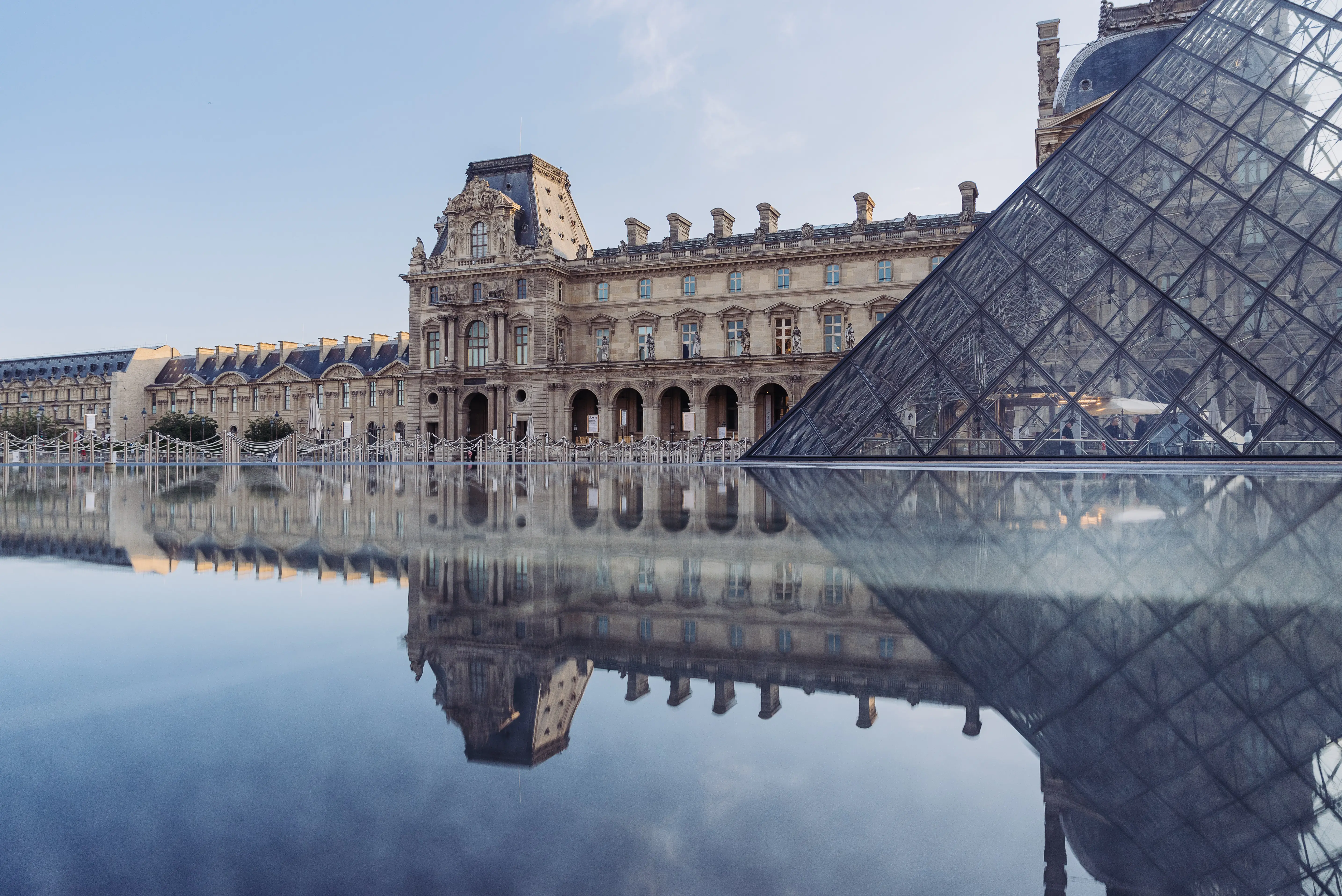
Tuileries Garden. After the Louvre, walk to the beautiful Tuileries garden adjacent. You will then reach the Concorde square with an authentic Egyptian obelisk from the Luxor temple. Now let’s head to Montmartre! You have a direct metro here, line 12, from station “Concorde” to station “Abbesses”.
Montmartre. Montmartre has a different atmosphere in Paris, an arty vibe. A unique visit on this 14-day itinerary in France. Tertre Square is where many painters come and sell their paintings of Paris. It is always bustling. There is even a vineyard in Montmartre and 2 windmills.
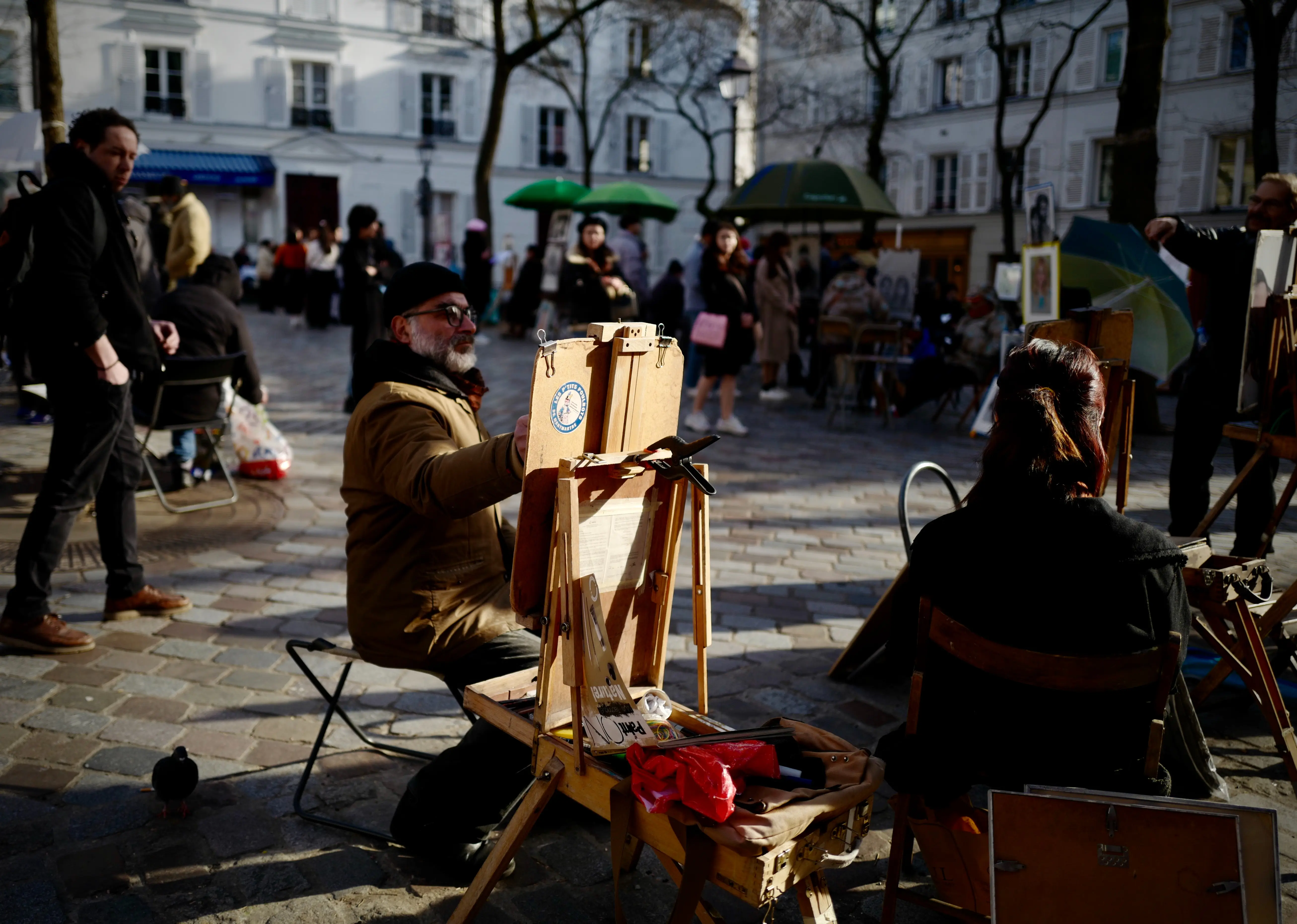
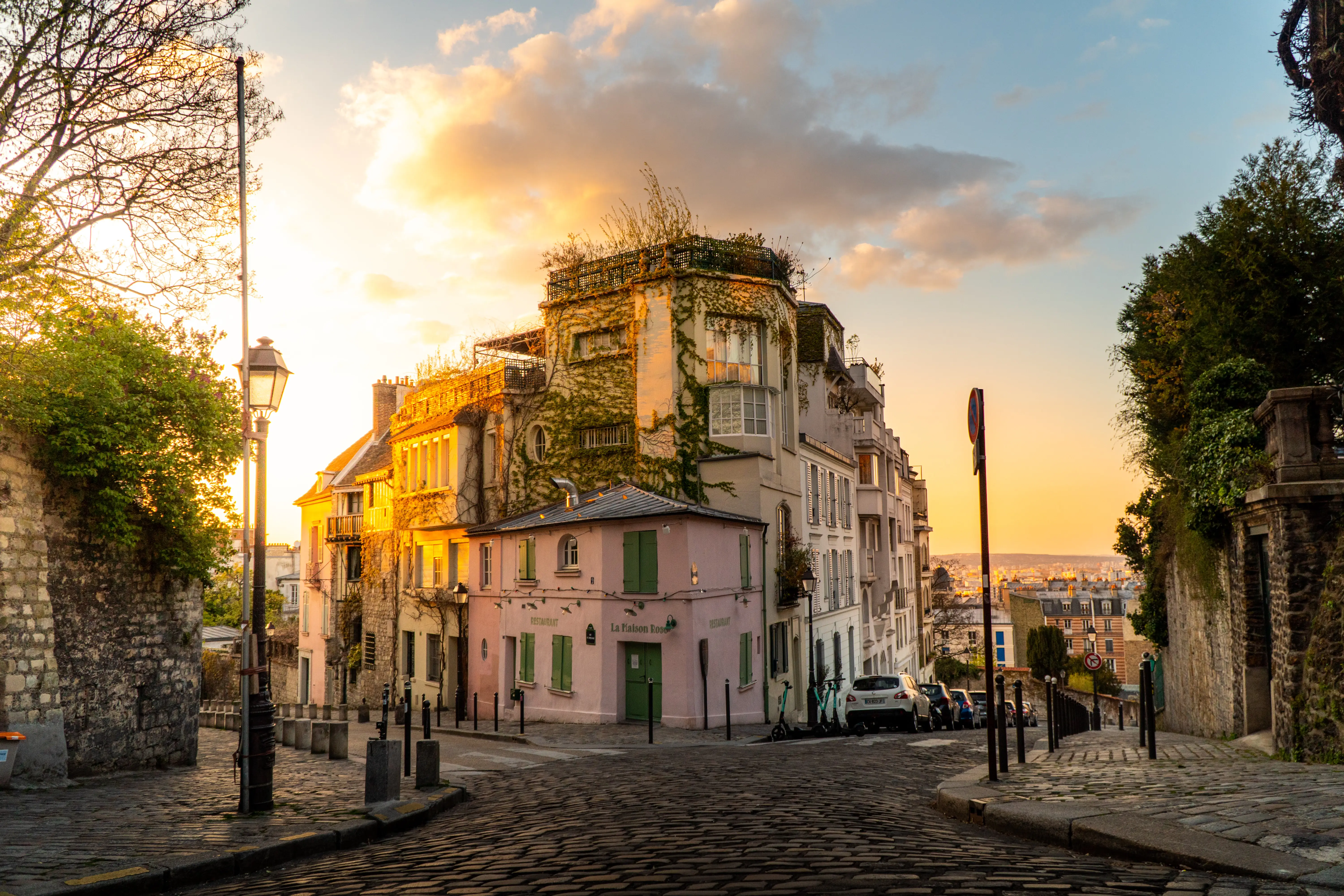
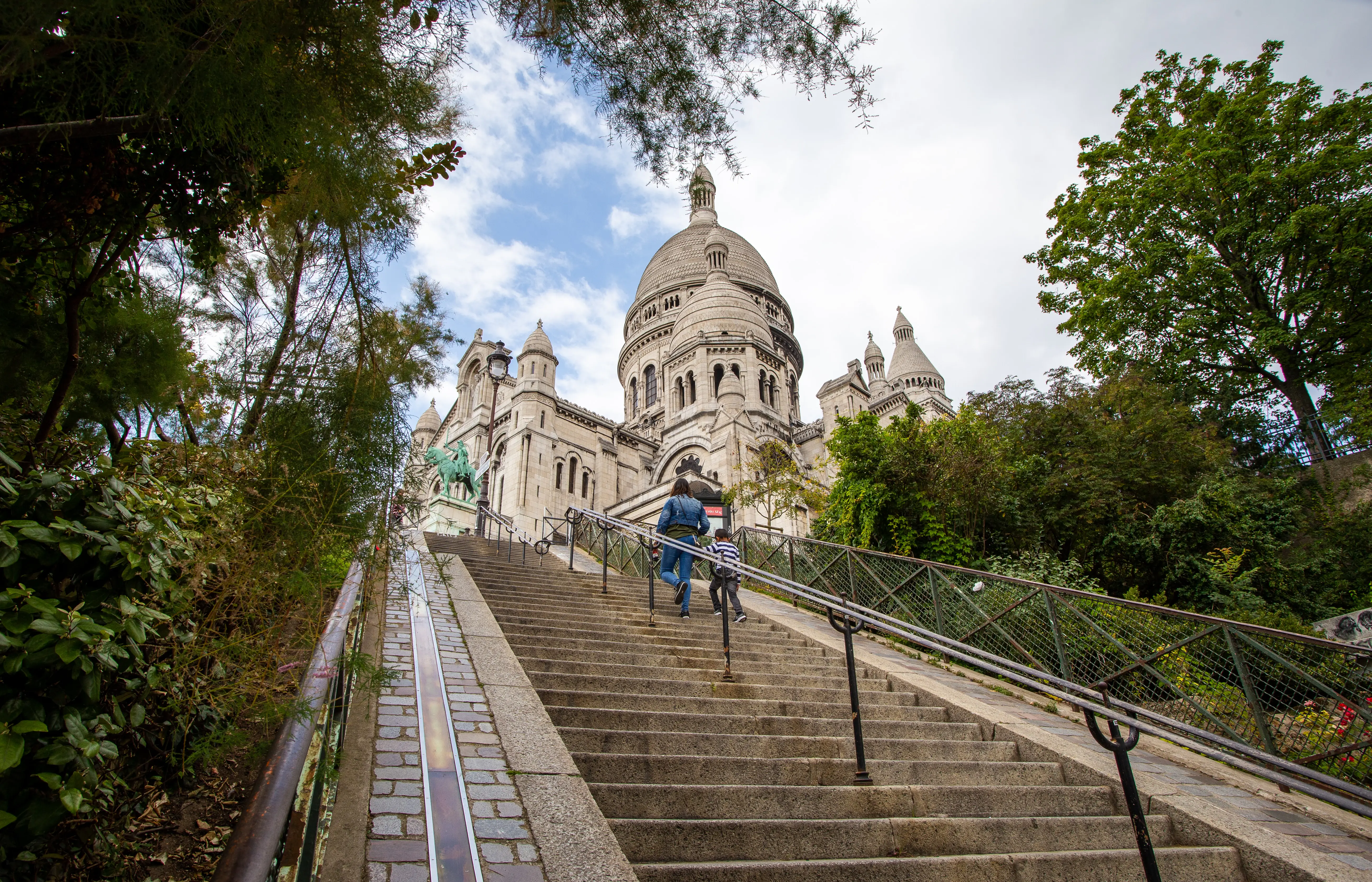
Walking tour. Starting from the Abbesses metro station, begin with the “Mur des je t’aime”, a wall painted with the words “I love you” in every possible language on the planet. Next, go to the funicular station (or climb the stairs if you want) to reach the top of Montmartre, with the church. Here, you will enjoy a magnificent view of Paris’ roof. There is an observation deck on top of the church for those who want an even better view. Next, head to the Tertre Square with the painters. You will also find great places to eat here.
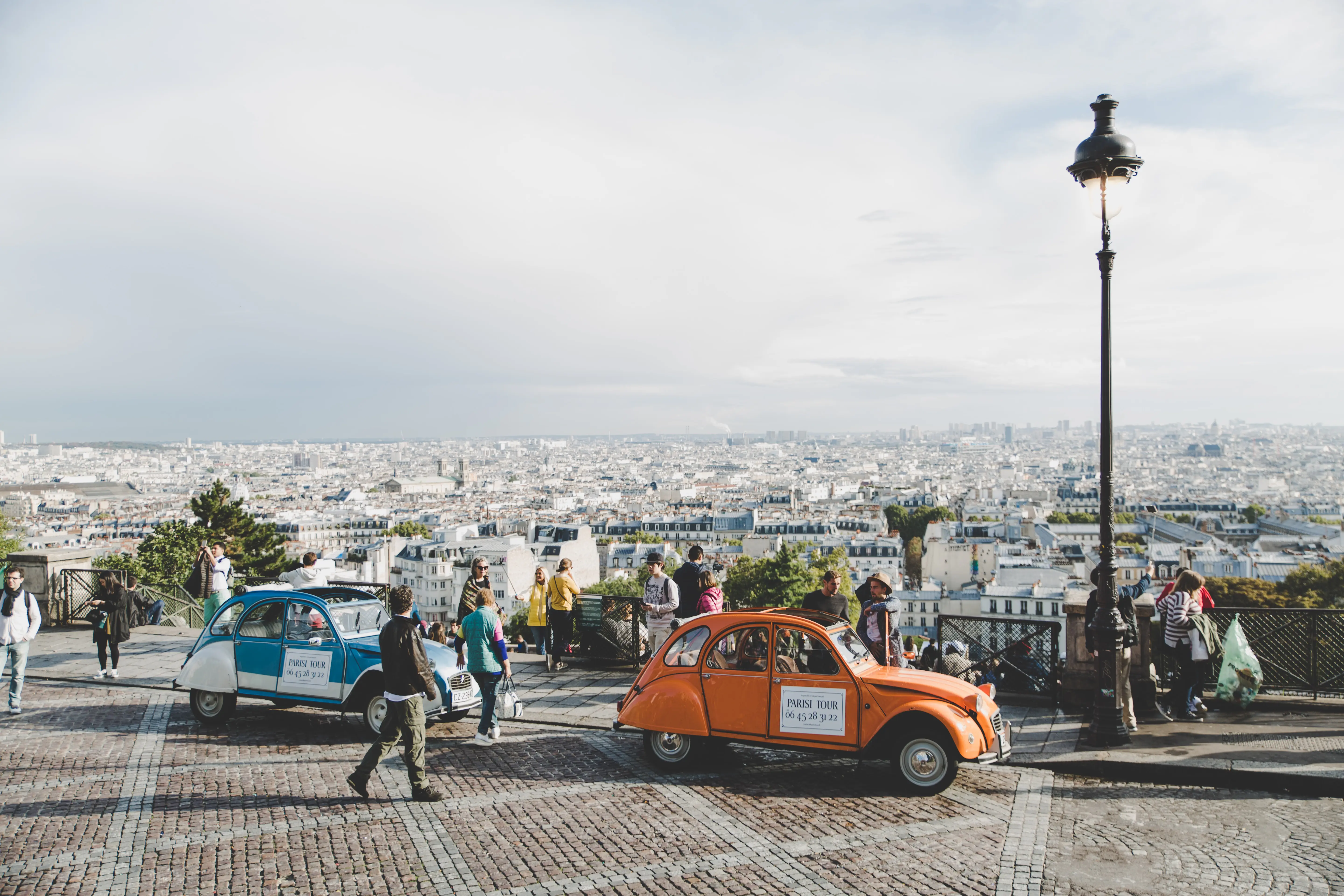
Evening. Let’s see a unique show for a great evening in Paris: a cabaret! There are multiple places to see one in Paris. If you are still in Montmartre, the famous Moulin Rouge is nearby!
Click here to see the 4 best cabarets in Paris.
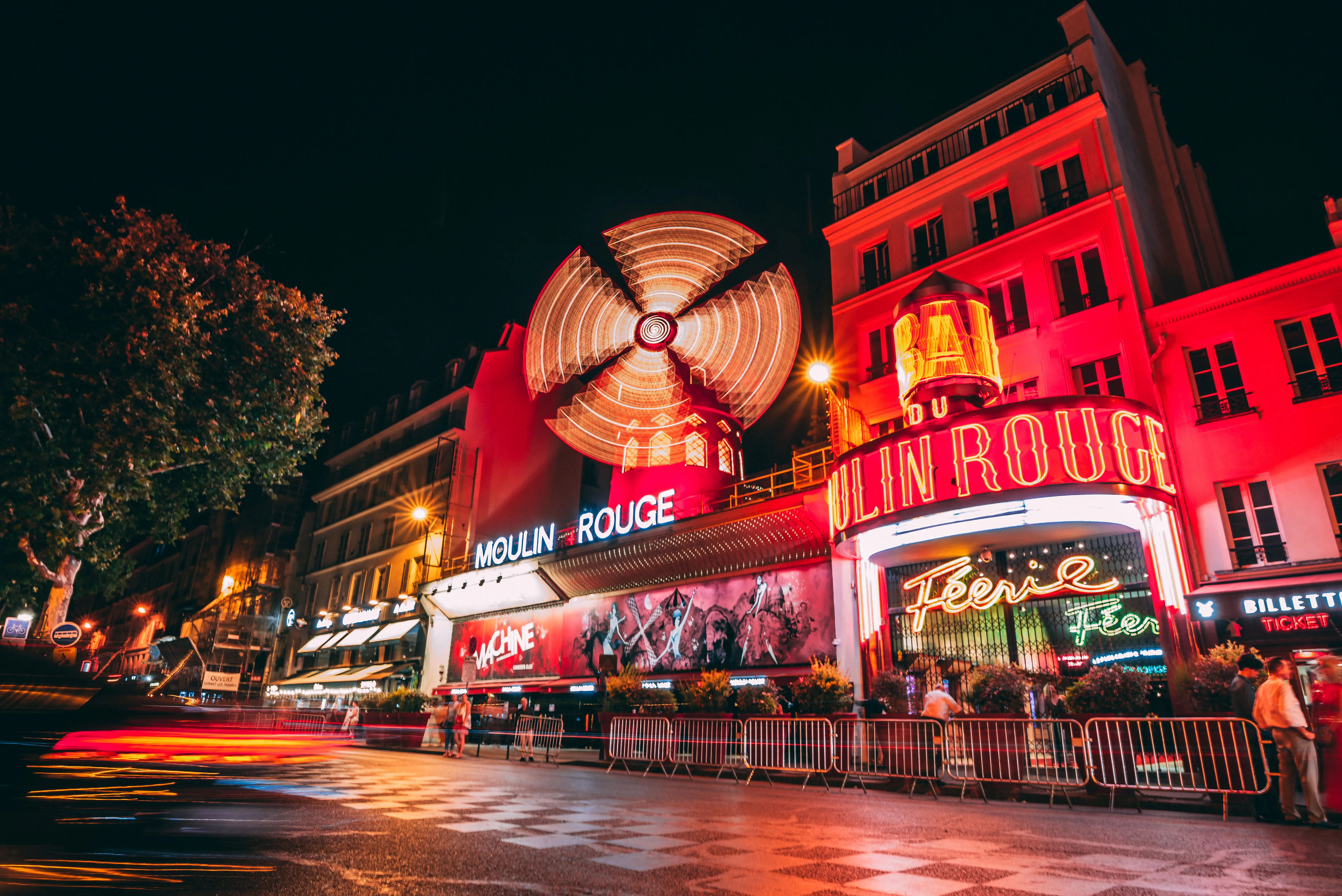
Day 5. Notre Dame, Pantheon, Luxembourg Garden
Île de la Cité. Here is the origin of Lutetia, the Roman town before Paris. Some historians believe a gallic town was also here, even though a large necropolis was found near the La Défense, Paris’ business district.
Sainte Chapelle. The Sainte Chapelle is a beautiful religious site since the 12th century! It is one of the most beautiful buildings in Paris, especially if you like stained glass. Since Notre Dame de Paris is closed due to the fire in 2019, there is a massive queue at the Sainte Chapelle. A skip-the-line ticket is strongly recommended. See our guide for visiting the Sainte Chapelle here.
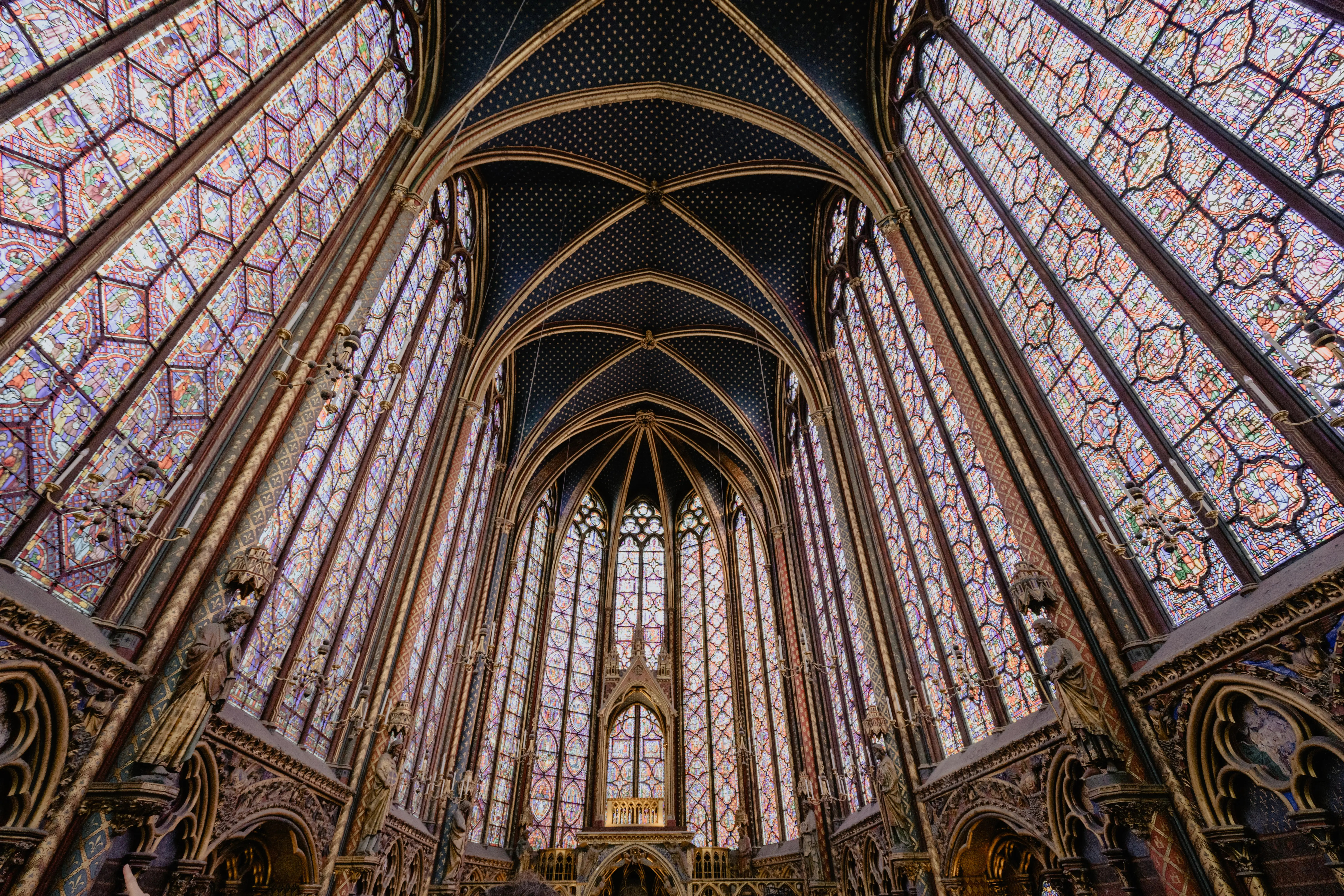
Notre Dame de Paris. The cathedral of Paris is closed now due to renovation following the 2019 fire. You still view it from it from the outside. The fire destroyed the roof, so you can still admire the facade from the outside. See here our guide for visiting Notre Dame de Paris.
Latin quarter. The Latin Quarter is south of Île de la Cité, so you only need to cross a bridge. You can buy a book at the unique bookshop “Shakespeare & Co”. Walk in the tiny streets of the Latin Quarter, pass by the remains of Roman Thermes, the chapel of Sorbonne University, and you will soon arrive at the Pantheon.
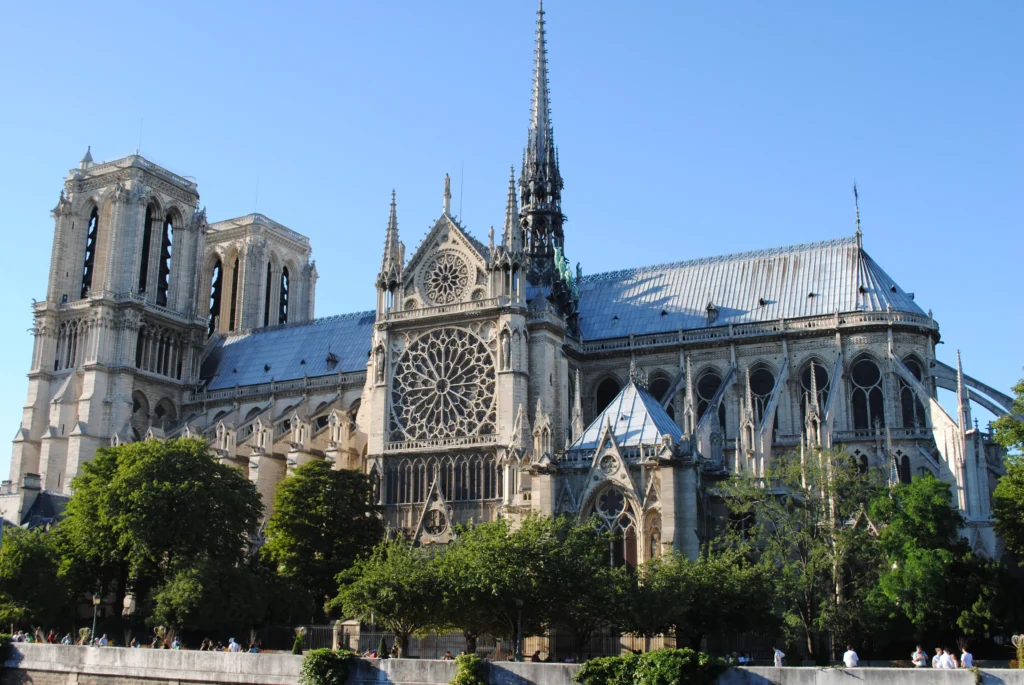
Pantheon. It was supposed to be a church dedicated to Genevieve, Paris’ patron saint. But the revolution happened, and it was reused as a mausoleum for distinguished French citizens. See here our guide for visiting the Pantheon.
Emily in Paris. A stone’s throw from the Pantheon, you can find the apartment of the Netflix show “Emily in Paris”, and the famous restaurant. It is located on the Estrapade square. You can even eat in the same restaurant, but don’t expect Gabriel to cook for you! Another place from a Netflix series on this 14-day itinerary in France is Etretat and the show “Lupin”.
Luxembourg Garden. Let’s end this day in the gorgeous Luxembourg garden. Many locals are hanging out here, sitting on the many chairs available. For children, if there is enough wind, you can rent a small sailing ship and play with it, let it sail in the pond. Don’t miss the Medicis fountain. Click here to see our guide for the Luxembourg Garden.
Optional. If you like to see skulls and bones, you can visit the Catacombs of Paris. It is 15 minutes south of the Luxembourg Garden. It is a fascinating visit, but not for everyone. There are thousands of human remains. Tunnels are under all of Paris, but only a tiny part is open to the public. Some Parisians often try to visit the forbidden area. Underground events sometimes take place in it. Some entries are very well known. Unfortunately, as there are many tunnels, some visitors don’t find a path to get out and sometimes die in the tunnel. So stay in a safe public area! There is always a huge queue, so consider the skip-the-line ticket (see prices here).
Day 6 – 7: Normandy & Mont Saint-Michel
After visiting Paris, let’s see another face of France. With 14 days in France, the itinerary has to include one of France’s jewels: the Mont Saint-Michel. Click here to see our guide for visiting Normandy.
Day 6.
Caen or Bayeux. To enjoy Normandy, you can stay in Caen or Bayeux. Caen is a bigger city, the hometown of William the Conqueror, King of England. Bayeux is smaller and closer to the D-Day landing beaches. If you want to experience life in an old small town and want to visit many sites related to World War II, stay in Bayeux. If you want to rent a car and visit Normandy, stay in Caen.
Train to Caen or Bayeux. It is the same train for Caen and Bayeux. You can buy tickets here. In Paris, it starts from Saint Lazare station. You can enjoy the typical French landscape along the way.
Day 6. Afternoon in Caen
Move around. The best way to visit the region is by renting a car. There are multiple places, and it is easier to see by car. You can book a rental car here. If you stay in Bayeux, you must book a guided tour with a transfer to visit Normandy. You can keep the vehicle for multiple days if you plan to visit Mont Saint-Michel by yourself and even the Loire Valley Castles. Click here to see the travel time to visit Etretat and Honfleur.
Etretat. Etretat is famous for its huge white cliffs. You can hike freely on it and enjoy the magnificent landscape. Lately, they are also renowned thanks to the Netflix series Lupin. Getting here without a car is challenging. That’s why we recommend renting a car in Caen and getting here by yourselves. On the way to Etretat, you will cross the Seine with one of the most giant bridges in France. Click here to see our guide for visiting Etretat.
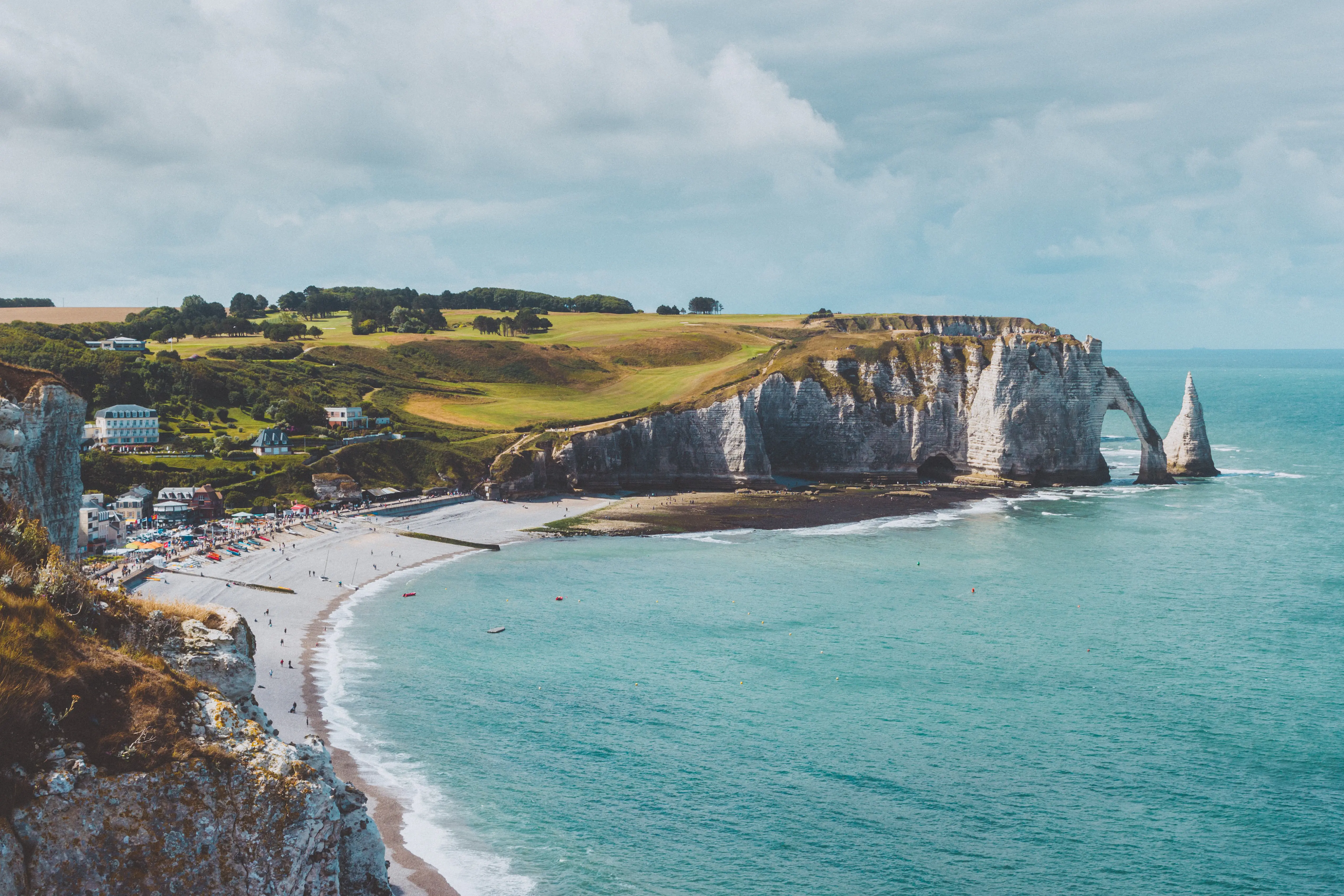
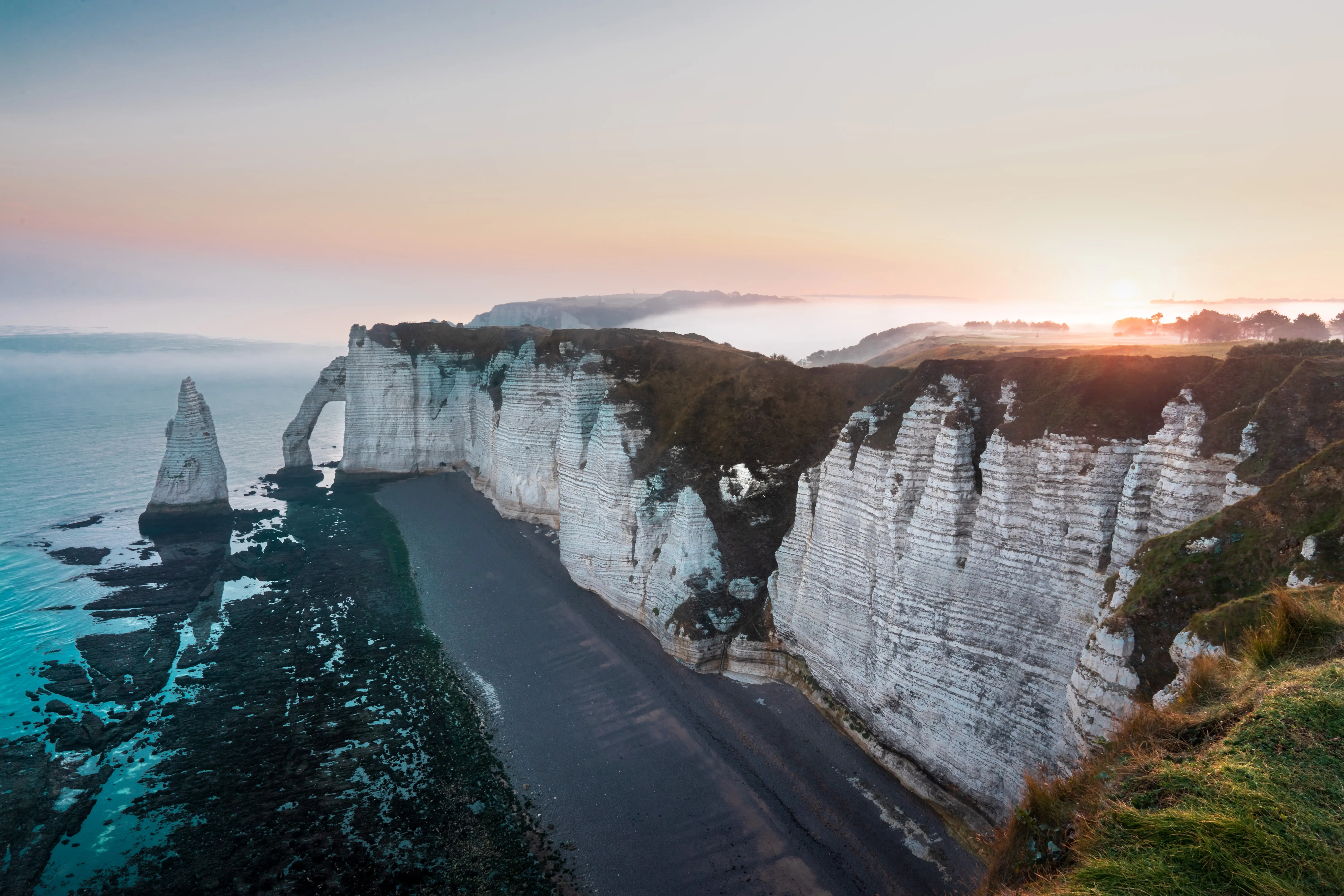
Honfleur. On your way back from Etretat, we recommend stopping at Honfleur, just after the Normandy bridge. It is a pretty town on the seaside, with colorful half-timbered houses. A charming visit during this 2 weeks itinerary in France!
Caen. Caen itself is worth a visit. It is the hometown of William the Conqueror, king of England. Click here to see our guide for visiting Caen (Coming Soon).
Day 6. Afternoon in Bayeux
D-Day Landing beaches. It was a critical operation and a turning point during the World War 2. Thousands of men from the United States, United Kingdom, and Canada landed on these beaches to help free France from the Nazi Germany. See here photos of a guided tour from Bayeux.
Click here to read our guide for visiting the D-Day landing beaches.
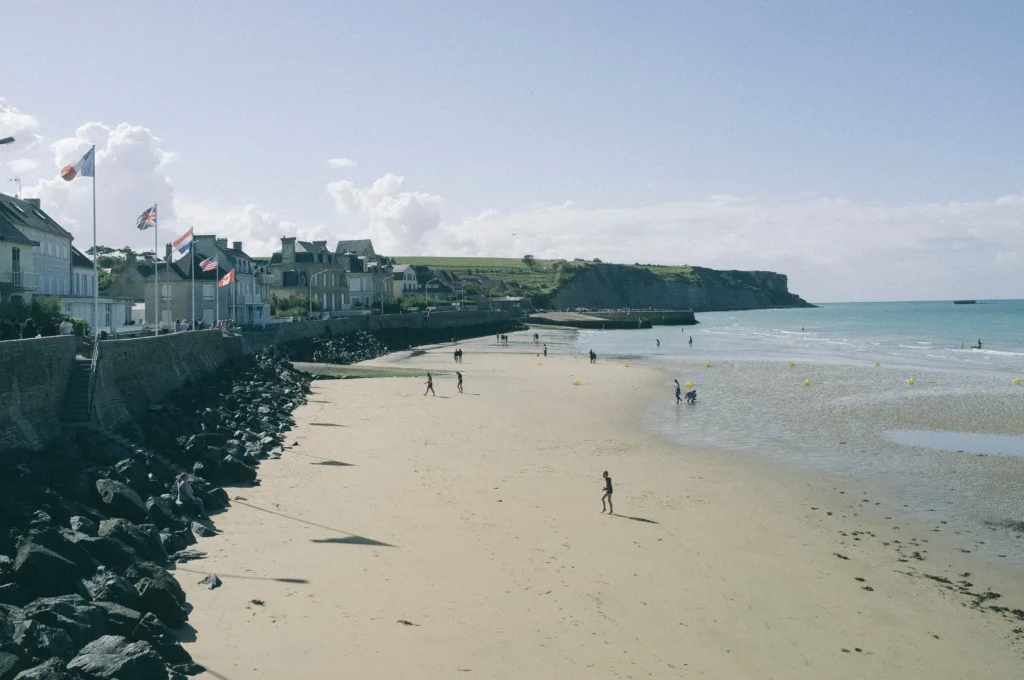
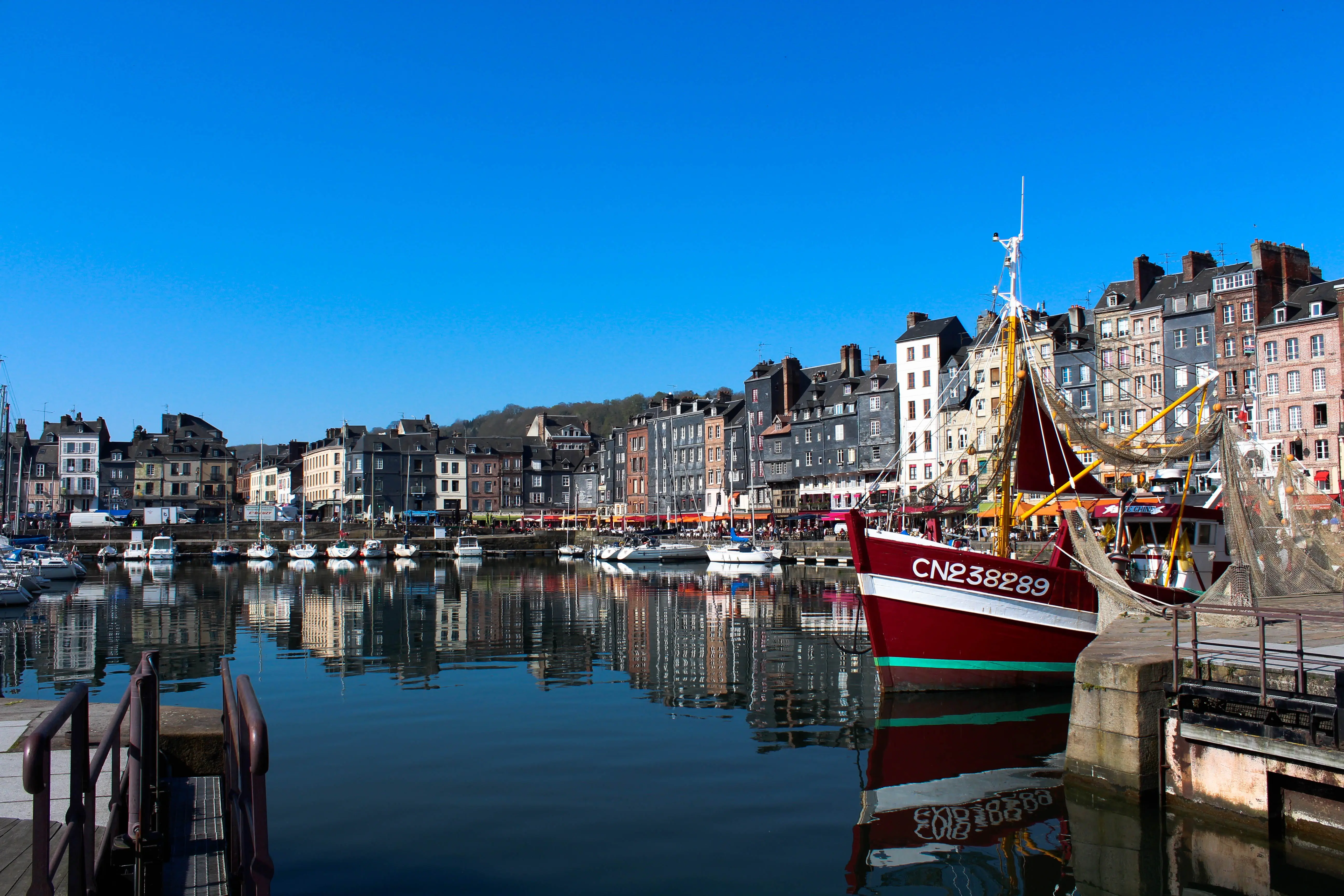
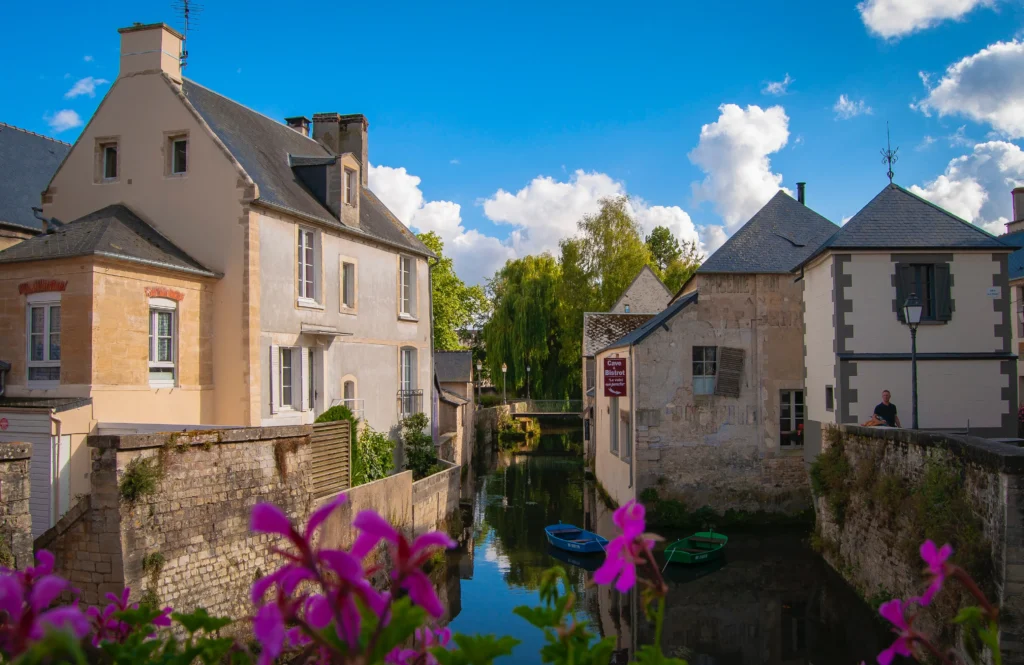
Day 7. Mont Saint Michel
Mont Saint-Michel is a UNESCO World Site Heritage. A unique place in the world. It is an abbey built on top of a rocky islet. Even though it will probably be crowded, it is still worth it! It is often a highlight on a 14-day itinerary in France. You must climb uphill on foot for about 30 minutes to reach the abbey’s entrance.
From Bayeux. You can go to Mont Saint Michel on a day tour from Bayeux. See prices here.
From Caen. You can rent a car and go to Mont Saint Michel by yourself. There is also a direct bus (See timetable here). There are also day trips from Caen (see prices here).
Click here to see our guide for visiting Mont Saint-Michel.


Alternative Day 6 & 7. Stay in Paris
If you prefer to stay in Paris, you can also visit the major sights of Normandy on a day trip. You will have more travel time but not have to leave your hotel.
- Mont Saint-Michel: See a day trip from Paris here
- Etretat, Honfleur, and Rouen: See a day trip from Paris here
- D-Day landing beaches: See a day trip from Paris here
You can also read our guides:
Day 8 – 9: Loire Valley Castles
Let’s see another face of France during this 2 weeks itinerary with the Loire Valley Castles. These magnificent castles were built during the 14th and 15th century. The French Royal Court used these castles as residency. They were less used after the construction of Versailles in the 17th century. The Loire Valley Castles are listed as a UNESCO World Site Heritage. On a 14-day itinerary in France, the Loire Valley Castles are a lovely visit.
Click here to see our guide for visiting the Loire Valley castles.
Day 8. Amboise
Travel to Amboise. The easiest way is to take a rental car in Caen and return it in Amboise or Tours. It is also doable by bus and train, but it involves at least 2 transfers or going back to Paris. See here for rental cars in Caen.
Amboise. Amboise is the best place to stay to visit the Loire Valley Castles. Amboise itself has a Royal Castle and lots of history. See here for accommodations in Amboise.
Chateau d’Amboise. It is worth visiting thanks to its splendid view over the Loire, the city, and its immaculate garden. You can also visit Leonardo da Vinci’s tomb!
Chateau du Clos Lucé. Home of Leonardo da Vinci! He arrived in Amboise in 1516 and lived and worked in the Chateau du Clos Lucé until he died in 1519. It is very close to the Chateau d’Amboise, only 500m. There is also an underground passageway that links both castles.
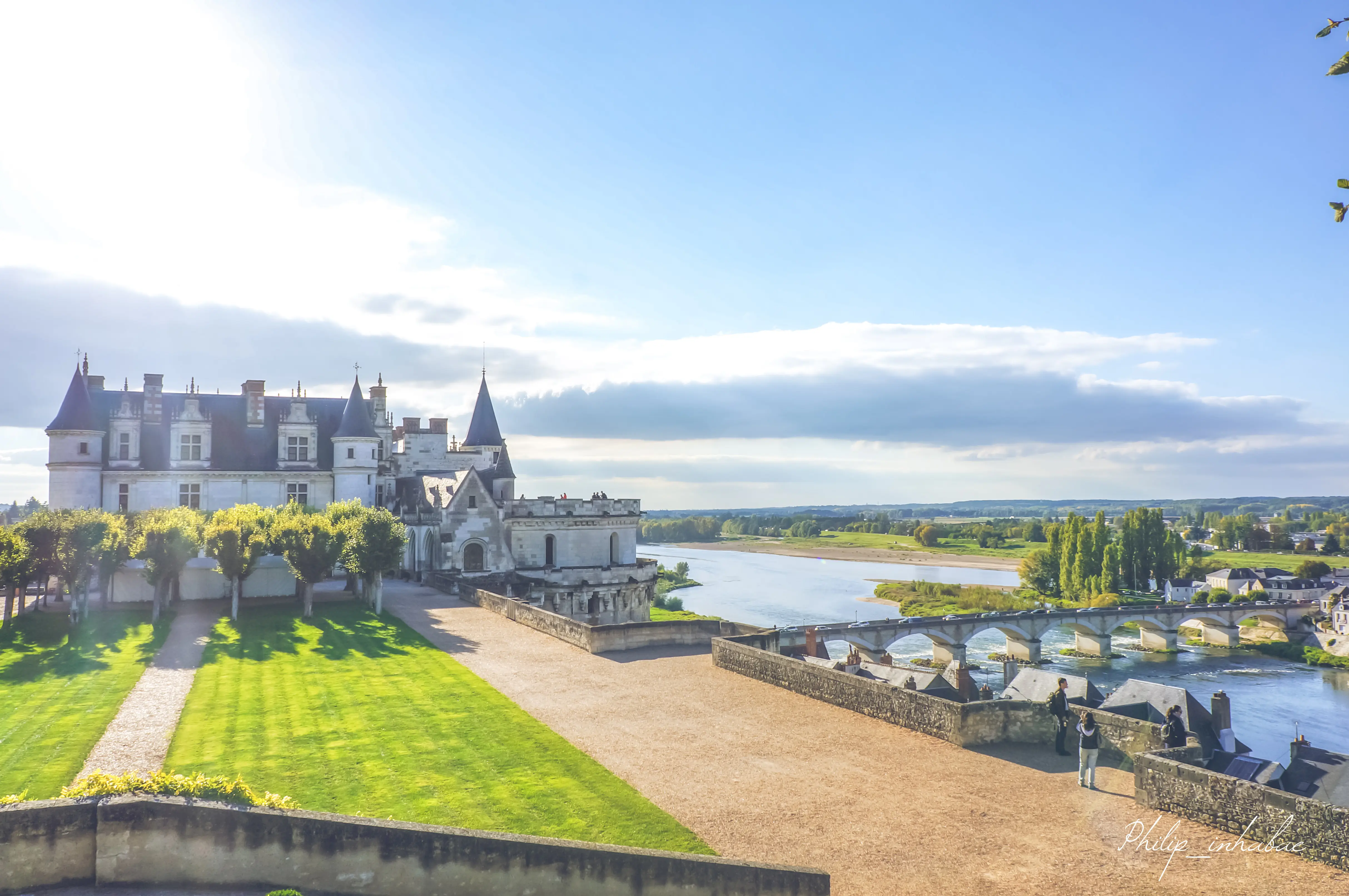
Day 9. Chambord and Chenonceau castles
Chateau de Chenonceau. It is one of the most famous: passing over a river! It was built as a bridge over the Cher River. It is only 20 minutes from Amboise by car. Click here to see our guide for visiting Chenonceau.
Chateau de Chambord. The masterpiece of Loire Valley Castles, the most magnificent castle. It is also the largest castle, so take your time to visit the inside and the gardens. By car, it is 50mn from Amboise.
Another castle? If you read and like the Belgian comic series “The Adventures of Tintin” by Hergé, you should also visit Cheverny Castle. It is Marlinspike Hall in real life! Blois is also a splendid castle to add to an itinerary of 14 days in France.
Alternative with children. You can visit the Beauval Zoopark, close to Amboise. It is the best zoopark in France and the 4th best in the world. It takes a whole day to visit it. It is located in Saint Aignan, 45 minutes by car from Amboise.
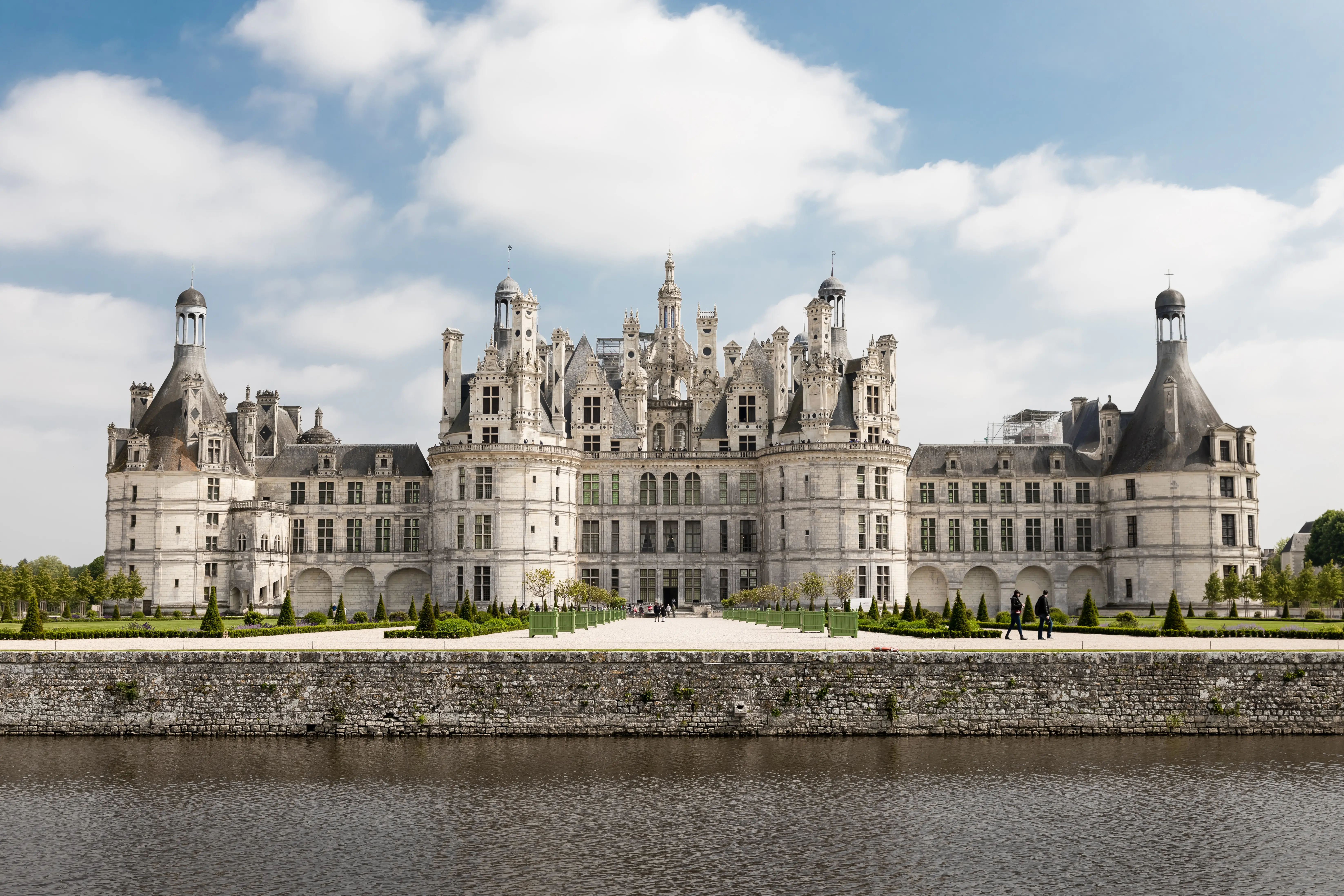
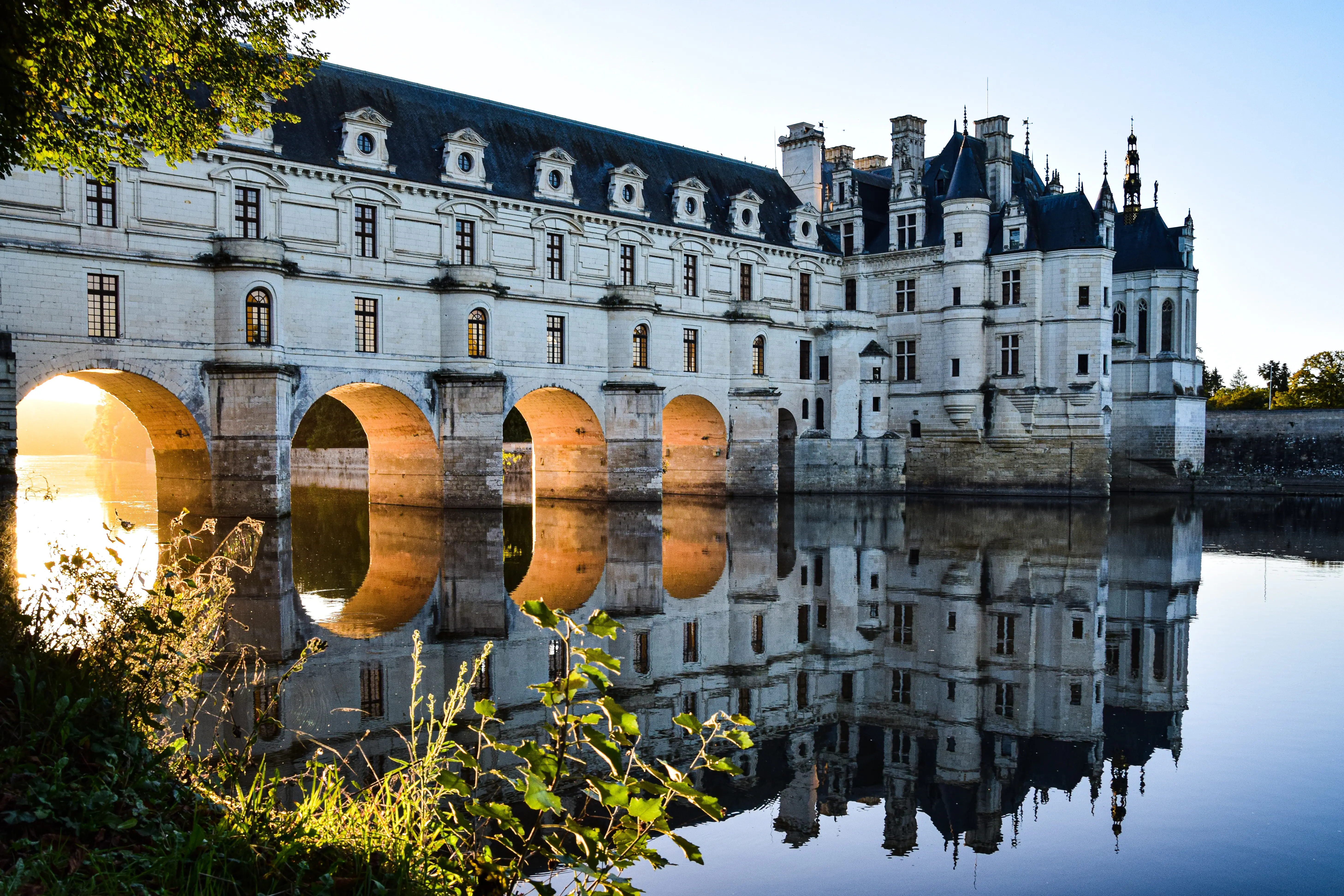
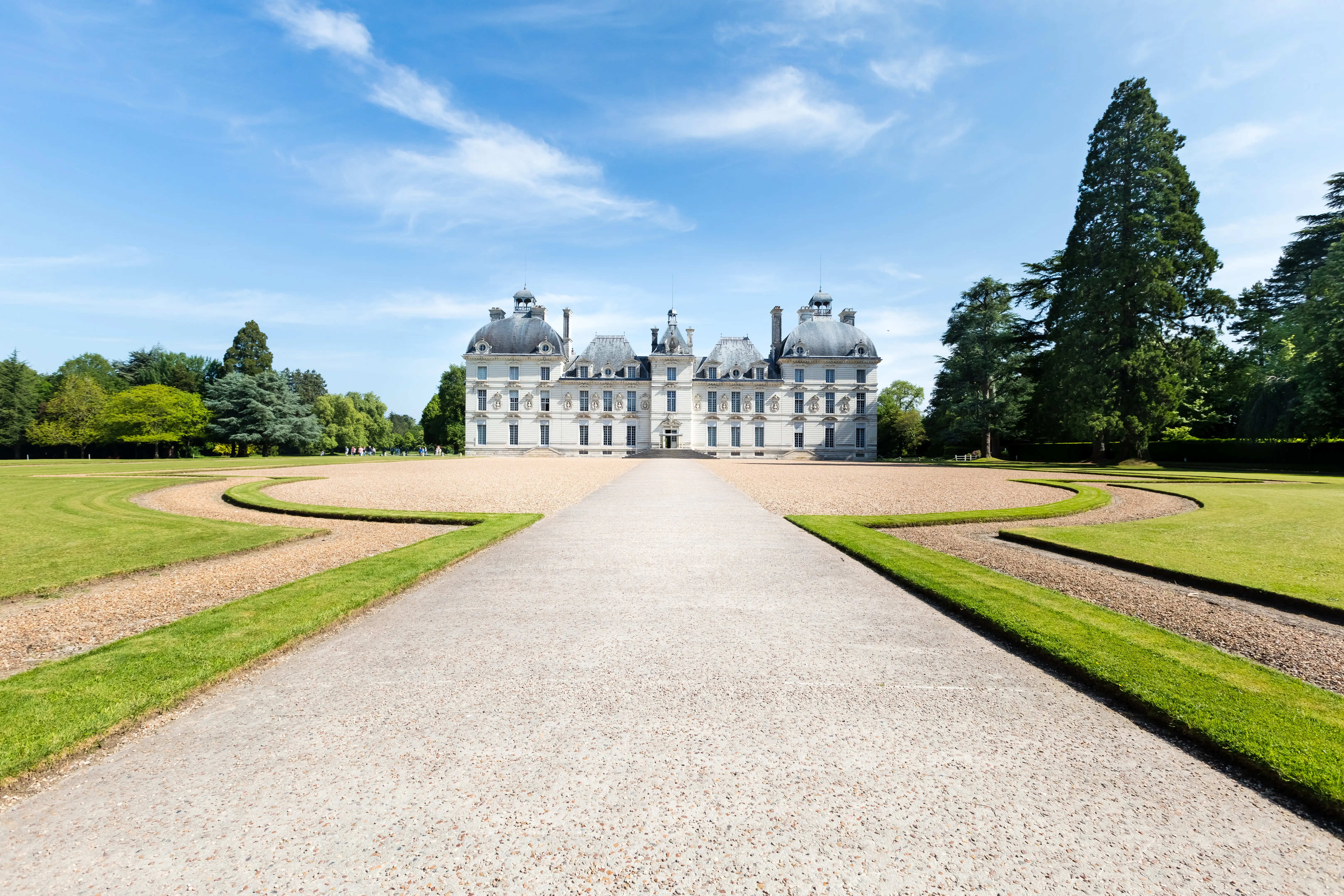
Alternative Days 8 & 9. Stay in Paris
You can also stay in Paris to visit the Loire Valley Castles. You will have more travel time, but you can stay in the same hotel in Paris without needing to pack the luggage again. During a 2 weeks itinerary in France, it can make sense to book a more extended stay in Paris. You can book a day trip with a transfer to visit the main castles:
- Chambord, Chenonceau and Amboise: day trip from Paris
You can also read our guide for visiting Chambord from Paris here.
Day 10 – 14: French Riviera
Another highlight of your trip to France during this 14-day itinerary is the French Riviera. Its great weather, azur water, and fantastic scenery make it a perfect location for vacation or to enjoy life. That’s why it is so popular among stars and royalties from all over the world. You will feel this atmosphere in Saint Tropez, Cannes, Nice, and Monaco. Click here to see the best things to do on the French Riviera.
Accommodation on the French Riviera. You can stay in multiple cities on the French Riviera.
- Nice: The most convenient location. It is the biggest city where the airport is located (click here to see the best hotels to stay at in Nice). On the other hand, it is a pebble beach with less of a chill-out vibe. The train station in Nice allows you to go to other cities on the seaside without transfer.
- Cannes: The best city to stay on the French Riviera. You have a lovely sand beach, a great seaside vibe, and legendary places. There is also a train station, ideal for going to Nice or Monaco. (Click here to see the best places to stay in Cannes)
- Saint Tropez: One of the most famous places on the French Riviera. It’s great if you want to see celebrities’ yachts or hang out in popular places. The only drawback is its location at the far end of the French Riviera, the further away. There is no train station here. Thus, you must take a car if you want to visit other cities. (Click here to see the best hotels to stay in Saint Tropez)
- Monaco: Stay in Monaco is the most expensive on the French Riviera. There are few hotels and almost only luxury ones. If you can afford it, it’s worth it! Monaco has a train station, even though people staying in Monaco tend not to use public transportation.
- Antibes: Antibes is fantastically located between Nice and Cannes. It is the most affordable location, as it is the least famous. The vibe is less oriented towards tourism here. (Click here to see the best places to eat and to stay in Antibes)
- You can also rent a countryside villa to live on the French Riviera like a prince.
Travel between the cities of the French Riviera. Many towns on the French Riviera have a train station. There are 2 lines: the east side of Nice and the west side of Nice. The train stops at Saint Raphaël, Cannes, and Antibes on the east side of Nice. On the west side of Nice, the train stops at Èze (the most beautiful village on the French Riviera) and Monaco. Saint Tropez is not connected to the train.
Day 10. Nice
Travel to Nice. You have to cross France to reach Nice. France is a country very oriented towards its capital city, Paris: you will have a transfer in Paris. There are 2 options. The first one, the fastest and cheapest, is to take a shuttle to Paris Orly Airport, then a flight to Nice. The second is to take a shuttle or train for Paris, head to the Gare de Lyon station, then a train to Nice. This train will be a high-speed train until Marseille (3h travel time), then it will run slower until Nice (3h travel time) because there are no high-speed rail tracks here. On a 2 weeks itinerary in France, the shuttle to Paris and plane to Nice is recommended.
Promenade des Anglais. The Promenade des Anglais (the English stroll), is an avenue along the sea. You can stroll here or take a bike and admire the Mediterranean Sea.
St Nicholas Cathedral. It is a surprisingly orthodox cathedral with its iconic bulbs. An exceptional place on this 14-day itinerary in France. Many Russians flew the Empire during the Bolshevik revolution and settled in Nice. Before the pandemic, there was even a direct train (without any transfer) from Nice to Moscow! See the location here.
Colline du Château. Climb this hill, or take the elevator, to enjoy a stunning view over Nice and the sea. Worth it! See the location here.
Click here to see our guide for visiting Nice.

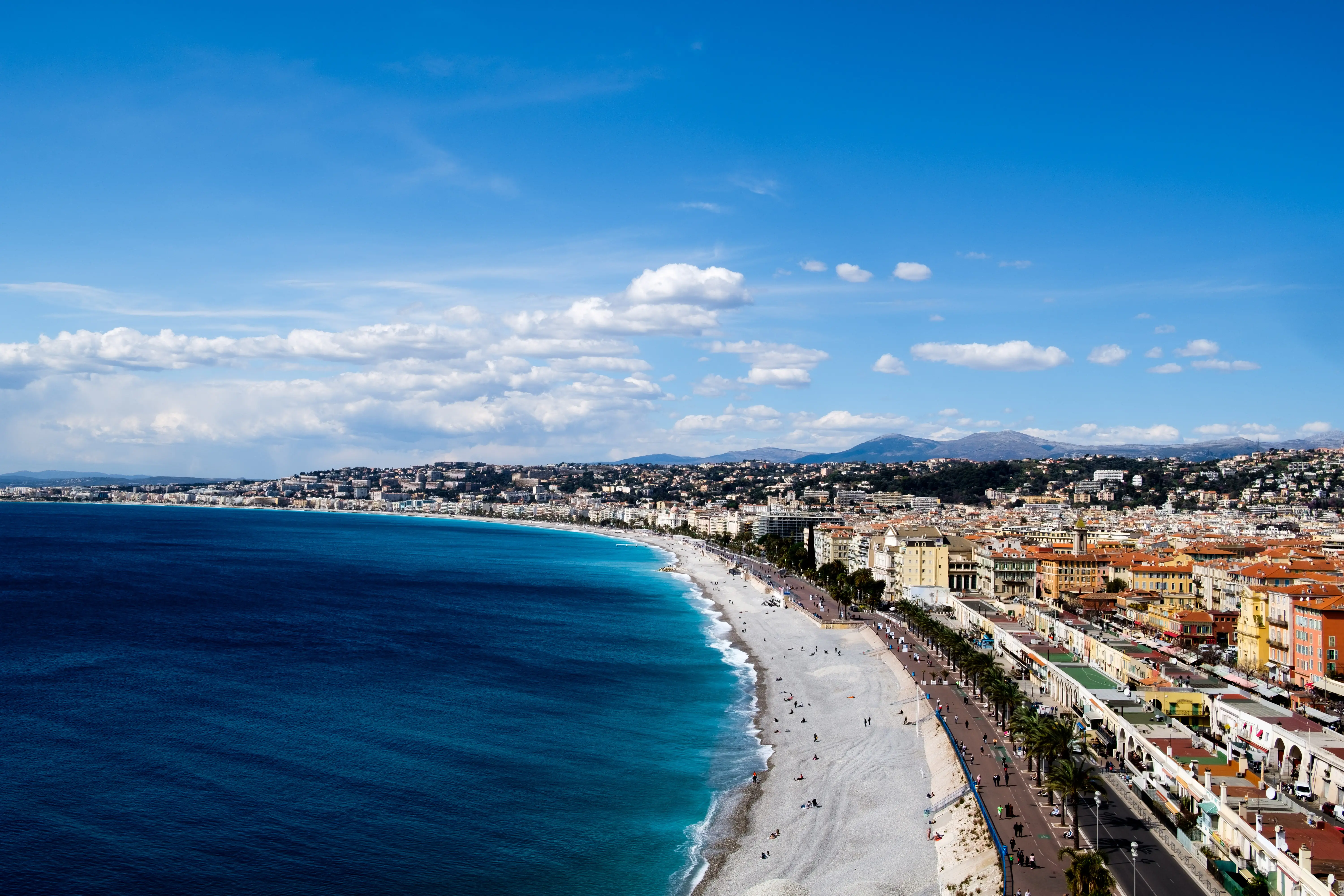
Day 11. Monaco
You can go to Monaco with a rental car or by train. There is a train station, “Monaco-Monte-Carlo”, in Monaco, with frequent trains from and to Nice.
The Rock. Not talking about Dwayne Johnson. Monaco is built on a steep hill overlooking the sea. The city is called “Le Rocher” in French, literally “The Rock”.
Not in France. Monaco is an independent city-state, not a part of France. The Grimaldi family has ruled it for over 700 years, since 1297! The legendary American actress Grace Kelly became Princess of Monaco when she married Prince Rainier III. Its only son is now the ruler of Monaco.
Luxury cars. Monaco is a luxury place. You can expect many supercars. You can rent for a 30mn or 1 hour a Ferrari or a Lamborghini to experience this life. (See prices here)
Sightseeings. Monaco’s sightseeing includes the Royal Palace, the Old Town, Saint Martin Garden, and the Casino district. Click here to see our guide for visiting Monaco.
On the way. You can stop at Èze between Monaco and Nice to discover this beautiful village, the most beautiful one on the French Riviera, during this 14-day itinerary in France. The train station is on the beachside. Hike on the Nietzsche path to reach the old village uphill. Plan for at least 40 minutes walk. Click here for our guide to the best 7 villages on the French Riviera.
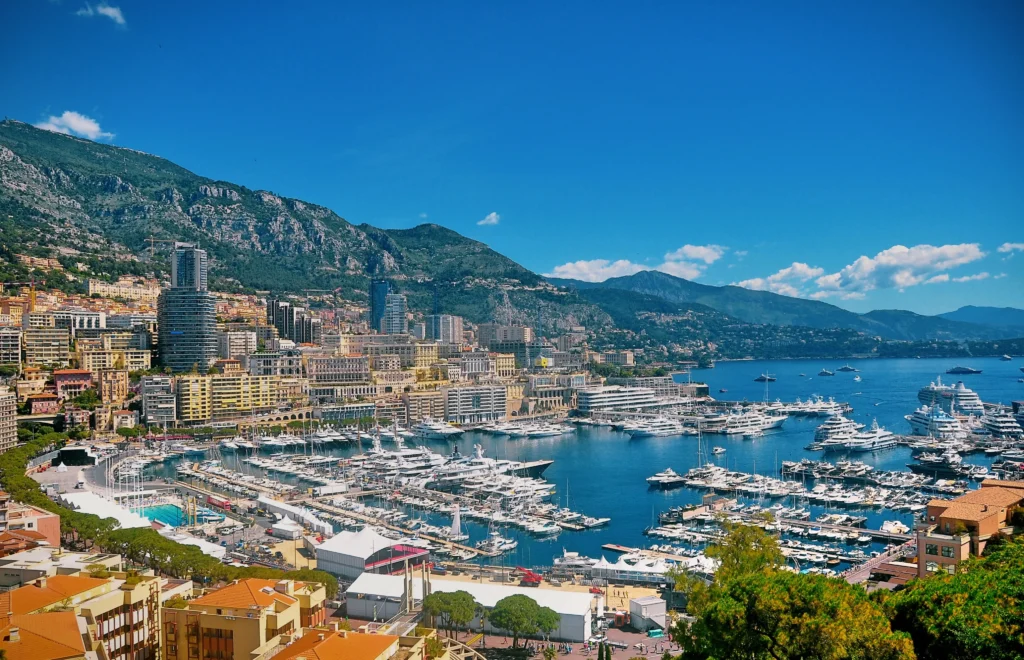
Day 12. Cannes and St Tropez
You can go to Cannes by train, visit the city first, then go to Saint Tropez by bus or boat.
Cannes. The most famous place in Cannes is La Croisette. It is the walk along the sea. There are also the stairs to the Palais des Festival, where the Cannes Film Festival is held. Click here to see our guide for visiting Cannes.
Saint Tropez. Strolling along the picturesque alleys of the old town, walking on the old port, and admiring the stunning panorama from Citadel are the best things to do in Saint Tropez. Don’t miss the coastal path if you like hiking! Click here to see our guide for visiting Saint Tropez.


Day 13. Verdon Gorges + Lavender fields
Let’s discover another gem on the French Riviera during this 2 weeks itinerary in France, but not on the seaside.
Verdon Gorges. The Verdon Gorges is a stunning canyon about 2h30 from the French Riviera. The turquoise watercolor is unique, thanks to its glacier source and minerals of rock flour. It is a beautiful outdoor setting for hiking, climbing, and canoeing. See the location here.
Lavender fields. The countryside of the French Riviera hosts an ideal climate and topography for lavender growth. You can marvel at a landscape full of lavender fields with its unique purple color. Lavender is usually blooms between May 15th and July 15th.
The most convenient way to visit Verdon Gorges and Lavender fields is by renting a car (see prices here) or booking a day trip (see prices here).


Day 14. Reflect on this 14 days itinerary in France
If you book a return flight from Paris, you must return to Paris. Be aware that there are 2 airports in Paris, so book a flight to the correct airport. International flights for the US usually land at Paris CDG airport.
By train. The train is very long: plan for 7h to 8h. Usually, it is also expensive, from 40$ to 250$ per ticket. There are few direct trains, so you may need to transfer somewhere. There are direct trains to the airport, so book one that stops at Paris CDG Airport, not in the city center.
By plane. Travel time is about 1h40, and tickets cost about 100$. It is the best way to go from Nice to Paris.
See you soon in France!
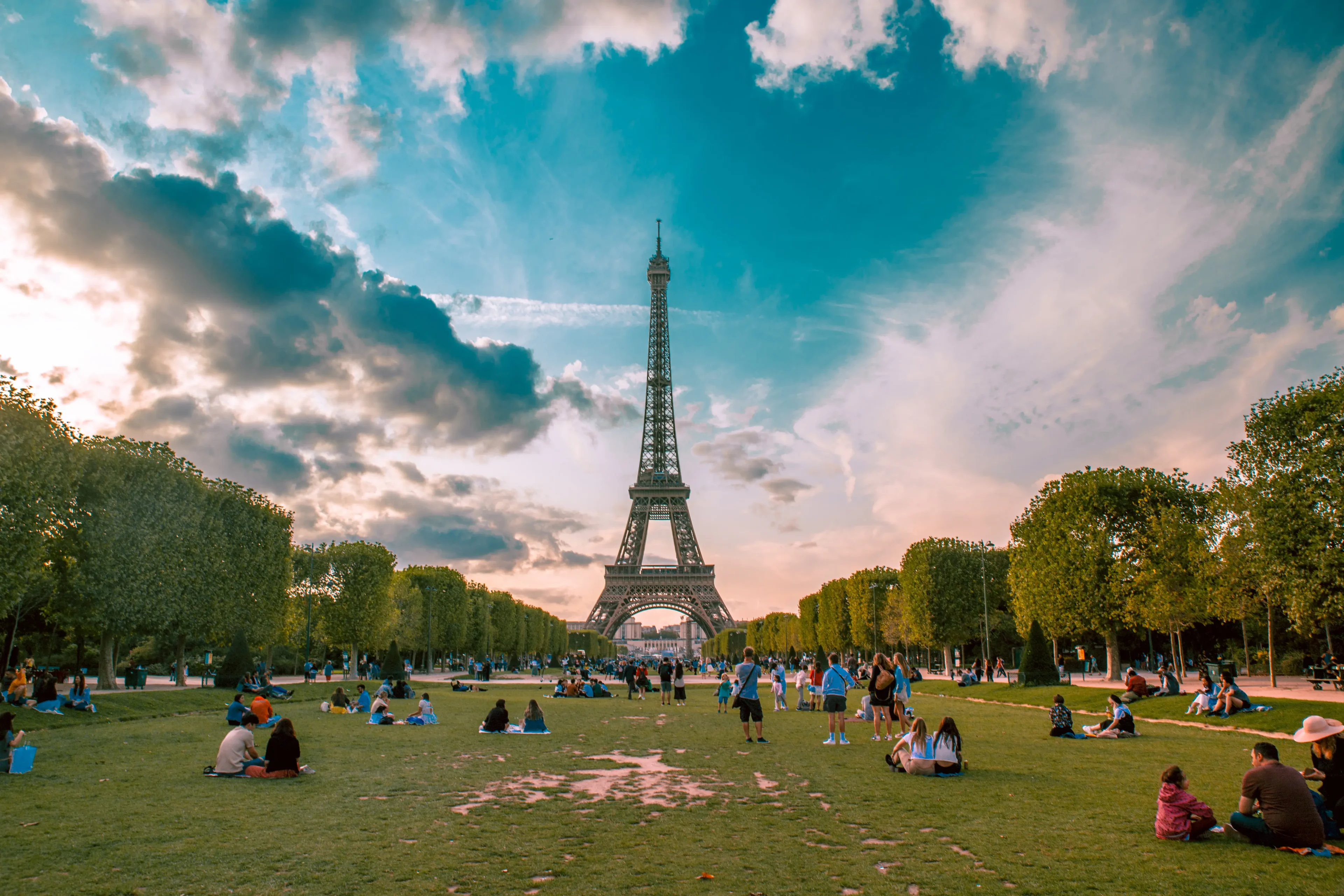
Leave a Comment